
Reviewing my Pesach newsletters from the past two years had quite an impact on me. As we have moved past the Covid pandemic, it can be easy to forget the havoc it wreaked across the world for so long, along with its many victims – something which this chag should really teach us not to do. Learning from the past is an important aspect of our Weltanschauung and one that makes us better, stronger and more connected. If there was ever a time in which the Jewish people needed to be reminded of our historical unity, it is know! I am so happy to be seeing folks returning to having their sederim with large groups of family and friends but fervently hope that we remember the lessons of the past year(s) and continue to take pleasure in the simple enjoyment of close family and friends, while reaching out to assist our fellow Jews for whom the chag may not be as joyous for a host of reasons  .
.
As Pesach is a celebration of the Jewish people coming together a nation for the first time, this is an easy idea to get behind with everything we have got. Personally, I find choosing wine for our sedarim a worthy endeavor to apply some effort too, especially given the teaching by our sages that wine gladdens the heart and there is no joy without wine (and meat). With wine such an integral part of the Pesach holiday, physical and spiritual aspects combined, my hope is that this annual guide makes the task easier and hopefully helps in enhancing this year’s seder we are each about to undergo, regardless of our personal circumstances. Take the opportunity to recognize all you have and take some time to contemplate the nature of the holiday – it will serve to enhance things dramatically.
Now, with the philosophical messaging out of the way, onto wine!
Busy Times
Typically, the weeks leading up to Pesach are the US kosher wine industry’s busiest, with more kosher wine purchased during this period than the rest of the year combined (in Israel, Rosh Hashanah is nearly as busy a buying season as Pesach and wine buying is also more evenly spread throughout the year). Personally, purchasing wine for Pesach remains one of my favorite parts of Pesach prep, a feeling I am sure is shared by most committed wine lovers, and this year has yielded some new and exciting wines for every budget and palate preference. However, even though the more than 5,000 different kosher wines being produced annually includes more than 100 disparate varieties of unmentionable options like wines with Cream in their name, Manischewitz, variations of Yayin Patishim and of course the Blue Bottle Abomination, there remain far too many potentially valid options for any sane human being to wade through.
Elevated Stress Levels
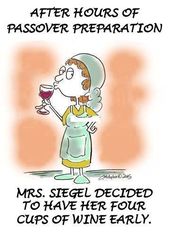 Each year we discuss the elevated stress levels brought on by cooking commercial amounts of restaurant-grade brisket and enough matza balls to feed Napoleon’s army while attempting to eradicate every speck of dirt from the inside of your oven with a toothbrush, with the hope that this Guide will eliminate wine choices as a potential area of stress. Despite its monumental importance, I feel very strongly that the wine selection process for your chag should as easy, stress-free and enjoyable as possible. That said, as most subscribers also use the guide throughout the year to assist with their regular wine shopping, we are including all the various usual components to assist in this endeavor as well.
Each year we discuss the elevated stress levels brought on by cooking commercial amounts of restaurant-grade brisket and enough matza balls to feed Napoleon’s army while attempting to eradicate every speck of dirt from the inside of your oven with a toothbrush, with the hope that this Guide will eliminate wine choices as a potential area of stress. Despite its monumental importance, I feel very strongly that the wine selection process for your chag should as easy, stress-free and enjoyable as possible. That said, as most subscribers also use the guide throughout the year to assist with their regular wine shopping, we are including all the various usual components to assist in this endeavor as well.
The hardest aspect of wine buying is the sheer (and ever-increasing) number of choices available to the consumer these days, as one contemplates the near-endless number of choices on the shelves or webpage of your favorite retailer. Without sufficient (and conflict-free) guidance, consumers are usually reduced to selecting wines based on the wine’s label, packaging (gift boxes for wine are a big incentive for some) or a more recent trend – uber heavy bottles for more popularly-priced wines, a guaranteed losing strategy. Exacerbating the issue are several additional mitigating circumstances, including the sheer number of mediocre-at-best available wines (along with an unacceptable amount of true dreck) and the unfortunate incentives leading many retailers to separate you from your hard-earned shekels by promoting these sometimes quite awful wines. While the level of knowledge within the kosher wine industry has grown tremendously over the last few years, the primary reason customers continue to leave stores with less than worthy options remain the lack of knowledge by those selling the wines, occasionally more sinister reasons are at play (e.g. “incentives”) so (as with all other shopping experiences) – caveat emptor. Other potential pitfalls to navigate is the aggravating inability of many retailers to accurately provide the vintage year of the offered wines and the classic “bait and switch” with an oenophilic twist – advertising great deals for highly allocated wines without having them in stock, and then trying to unload significantly inferior wines to unsuspecting consumers. Adding to the morass is the fact that many stores and online purveyors continue carry (and sell) wines so far past their drinking windows as to be criminal.
Help is Here
 With a desire to help reduce stress levels in any way I can, I have once again curated my Pesach Wine Buying Guide from among the thousands of available options. Hopefully the Guide will simplify your wine shopping and free you to spend time with the remainder of chag preparation, while having time to spend with your family and other loved ones.
With a desire to help reduce stress levels in any way I can, I have once again curated my Pesach Wine Buying Guide from among the thousands of available options. Hopefully the Guide will simplify your wine shopping and free you to spend time with the remainder of chag preparation, while having time to spend with your family and other loved ones.
As with most other retail experiences, inflation (and other factors) has continued to wreak havoc with pricing so, for the first time ever I have slightly moved the goal posts on the range of price tiers for The Guide (the number of wines over $200 is somewhat overwhelming). This year I have included my top recommendations for wines in the following five price tiers: (1) Under $20, (2) between $20-34.99, (3) between $35-54.99, (4) Over $55 and (5) 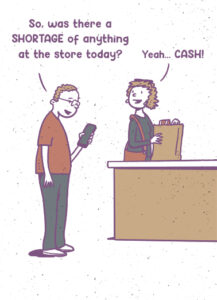 Moshiach Wines. As most of my readers know, Moshiach Wines are wines that I would proudly serve the Moshiach, were I ever sufficiently deserving for him to grace my Seder table.
Moshiach Wines. As most of my readers know, Moshiach Wines are wines that I would proudly serve the Moshiach, were I ever sufficiently deserving for him to grace my Seder table.
Many of the wines on this list will not come as a surprise to my regular readers given their perennial appearance over the years resulting from the consistent excellence of their producers and the talent of the applicable winemaker. As the quality and quantity of top-notch kosher wines continues to expand, the number of contenders for the Guide has increased exponentially, exacerbating the already difficult process of putting together this highly curated list (listing every single contender would defeat the entire purpose of creating the Guide). Representing less than 5% of all commercially available kosher wines, the list could serve to eliminate all stress involved in sifting through the menagerie of options. I am also making my regular plug for drinking more white wines. If you are one of those unfortunate and self-proclaimed “I don’t drink white wine” people, please take this as an opportunity to try something new – I promise you won’t be disappointed.
The Fine Print
As a corporate lawyer with over 20 years of deal-making under my belt, it shouldn’t surprise anyone that a list of this magnitude comes with some fine print and a few important caveats.
 1. The Guide isn’t intended to be a comprehensive list of every wine I believe worthy of your consideration. It represents a selection of the better wines available across different pricing tiers; each of which I recommend and believe worthy of your Pesach table. As I have written far less over the past year than ever before, I have included more wines than usual on the list to compensate. Of course, all wines remain subject to their recommended drinking window.
1. The Guide isn’t intended to be a comprehensive list of every wine I believe worthy of your consideration. It represents a selection of the better wines available across different pricing tiers; each of which I recommend and believe worthy of your Pesach table. As I have written far less over the past year than ever before, I have included more wines than usual on the list to compensate. Of course, all wines remain subject to their recommended drinking window.
2. Broadly speaking, most wines from Dalton, ElviWines, Flam, Gvaot, Herzog (in their Lineage & Special Reserve series) Recanati and Tzora are worth buying, even if they aren’t listed below.
3. With a few rare exceptions I didn’t repeat any wines listed in last year’s guide and many of last year’s wines are still available on the shelves and remain in top drinking condition so check out last year’s list for additional suggestions and/or vintages, as many of those are still available and drinking beautifully!
4. Some wines may only be available either in Israel or the US and I have tried to mark them as such. While there remain a number of wines that remain available only in their country of production (e.g. most winemaker “Pet Projects” in Israel, Four Gates and Shirah in the US and a number of French options in Europe), the vast majority of recommendable Israeli wines are imported to the US these days (Shmita excepting) and most of the Herzog/Royal wines that were formerly “US Only” wines, are exported to Israel, making this list more useful across the broadly disparate geographic location of my 11,000 subscribers.
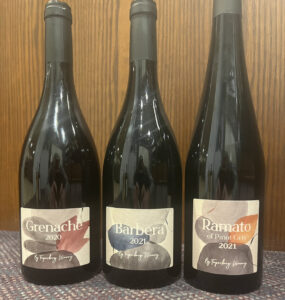 5. Due to the disparate geographical disbursement of my reader base, the listed vintages may be different depending on which part of the world your shopping cart is in (although vintages tend to also shift from local retailer to retailer and distributor to distributor, depending on how much of the prior vintage they have left in stock). Especially for Israeli wines, different vintages are available in Israel and outside of Israel.
5. Due to the disparate geographical disbursement of my reader base, the listed vintages may be different depending on which part of the world your shopping cart is in (although vintages tend to also shift from local retailer to retailer and distributor to distributor, depending on how much of the prior vintage they have left in stock). Especially for Israeli wines, different vintages are available in Israel and outside of Israel.
6. It is always best practice to consult me before buying a recommended wine from a different vintage but in this case, given the fluctuation in quality of recent vintages and potential shipping/storage issues, I’d be even more careful than usual when utilizing this list to purchase non-listed vintages.
7. As with most goods, wine prices have dramatically escalated over the last 12 months, so wines in each tier have often moved up to the more expensive slot. Additionally, prices fluctuate wildly from location to location, so when determining the price tier for each wine I typically average among several US online and brick and mortar options to achieve what is hopefully an average price for the various wines. However, listed wines in your local market may not always fall exactly within the listed price points (online price-checking is always a good idea, as is asking retailers to match listed prices).
Seder Drinking Conundrum
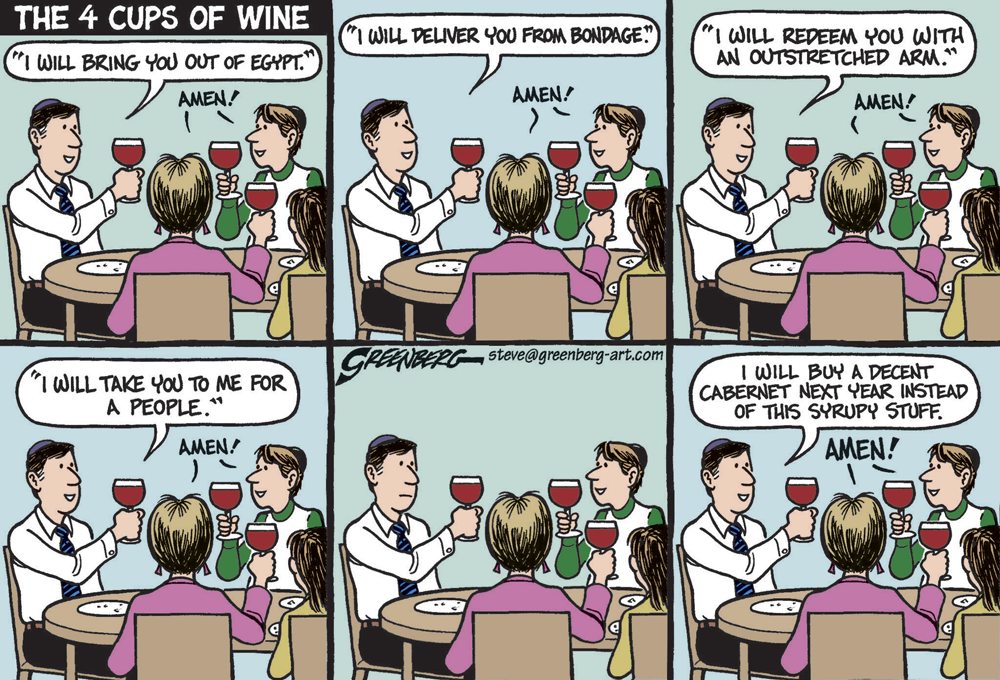 Despite occupying a top spot on any oenophile’s list of favorite customs, the tradition to consume four full cups of wine at the Seder can be tricky to navigate, with a handful of potential issues requiring some thought. Thankfully, with a bit of thoughtful planning they can all be easily mitigated.
Despite occupying a top spot on any oenophile’s list of favorite customs, the tradition to consume four full cups of wine at the Seder can be tricky to navigate, with a handful of potential issues requiring some thought. Thankfully, with a bit of thoughtful planning they can all be easily mitigated.
First and foremost is that four full (or even partially full) cups of is a lot of wine to consume at one sitting, especially given the fact that the first two cups are typically imbibed on an empty stomach. Another issue stems from the tradition of using a silver goblet for Kiddush (and the rest of the cups). While the easy solution of pouring the wine into a proper wine glass immediately following the recital of Kiddush works beautifully on a regular Shabbat or chag, the lengthy Haggadah reading between pouring the wine and consuming it results in longer wine-silver contact that is advisable. Other potential issues include the (halachik driven) tradition of using only red wines and avoiding mevushal wines during the Seder.
With the Seder representing one of the most important meals on the Jewish calendar, people try to have the nicest (and often the correlatingly most expensive) wines possible, creating yet another potential conundrum. Despite being among the kosher wine world’s best, the in-store vintages of popular high(er)-end wines from Bordeaux, Italy, Spain, Israel and California are not yet ready to drink and unlikely to be properly appreciated giving the hurried manner in which most of the Seder’s four cups are mandated to be consumed. Many of the better wines are full-bodied, oak aged and boldly flavored; all attributes not very conducive to Seder drinking (even with extensive decanting). With the combination of the empty stomach with which most people approach the first two cups, the halachic requirement to consume nearly an entire cup of wine rather rapidly and the oft-additional stress from trying to corral hyperactive children; most Sedarim are unlikely to offer ideal conditions for enjoying such magnificent wines. That said, if your current circumstances allow for a leisurely seder enhanced by the finest wines in your cellar – go for it! Nothing elevates a meal like sharing a special and well-aged wine with friends and family and the spiritual aspects of wine sanctifying our table and seder-night experience would make using your best bottles to elevate the exalted experience as good a use of Moshiach wines as I can fathom.
The Perfect Solution
 So, unless you are among the rarified company enjoying a seder conducive to such Moshiach wines, I suggest saving the more expensive wines for leisurely drinking during Shulchan Aruch and the plethora of subsequent holiday meals, while finding other worthy options for the Seder’s four cups. Being a traditionalist, my personal custom is to use red wines for all four cups, while selecting wines that fulfil a few basic criteria to ensure their enjoyment through the long Seder meal.
So, unless you are among the rarified company enjoying a seder conducive to such Moshiach wines, I suggest saving the more expensive wines for leisurely drinking during Shulchan Aruch and the plethora of subsequent holiday meals, while finding other worthy options for the Seder’s four cups. Being a traditionalist, my personal custom is to use red wines for all four cups, while selecting wines that fulfil a few basic criteria to ensure their enjoyment through the long Seder meal.
Over the last few years, the use of rose as a Seder wine has gained popularity. With color, relatively low acidity, affordability and a mass appeal, the option has a lot going for it. That said, I personally find it to be a simpler and more quaffable genre, lacking the necessary gravitas for such an exalted meal. Additionally, the quality of availability rose wines to have decreased (in a nearly correlative manner to its increasing popularity) to such a degree that recommending them as an appropriate genre doesn’t feel right to me.
Seder night is one of the most exalted evenings we get to spend in G-d’s company. It is an evening dedicated to celebrating our emancipation from historical slavery the coalescing of the Jewish People into a unified nation with collective responsibility for one another (a concept more important to remember these days than ever before). Given the importance of the evening, utilizing top-notch wine should remain a pre-requisite to proper execution of the Seder. The diverse and wide-ranging array of palate preferences around a typical seder table calls for a diverse range of wines. Coupled with the significant amount of wine to be consumed by the large gathering of family and friends, I focus on approachable, medium bodied quality wines that are enjoyable without the requirement of any level of oenophilic sophistication (or even appreciation). Over the years, my “go-to” Seder wines have included Israeli Petite Sirah from Vitkin and Recanati, entry-level Spanish & Italian wines from ElviWines and Terra di Seta respectively, well-priced Bordeaux, Mia Luce’s CSM blend and well-made Pinot Noir. To the extent you are looking for well-priced and versatile white (or Rosé), good bets will be rosé from Dalton or Hajdu; Sauvignon Blanc from Yarden, Covenant and Goose Bay, Pinot Grigio from Dalton or Yarden and Rieslings from Carmel, Kishor or Vitkin..
Parting Advice
During this busy buying season, retailers pull out all the stops to bring in your dollars with big sales everywhere. Between the increasing competition and online availability of most top-notch kosher wines, most wine merchants will match any published price, so always ask your favorite retailer to match the prices you have seen elsewhere and, if you aren’t happy with the price – ask for a discount.
With all the explanations behind us, I present my annual
Pesach Wine Buying Guide
Under $20
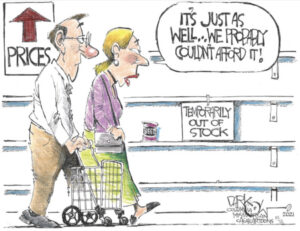 Rising prices have somewhat decimated this list, with many previously well-priced options moving up to the next price point. However, there are still several good options on this list, each of which yields a good and enjoyable wines, albeit these wines aren’t complex or cellar worthy (with a few exceptions). With oak barrels representing a significant percentage of a wine’s cost (actual cost and the time-value of aging), many of these wines have spent little to no time in oak contributing to their lower prices. Along with focusing on “Safe Bet” wineries, more popular varieties like Cabernet Sauvignon, Merlot, Syrah and Chardonnay tend to be more expensive than their lessor known peers. Instead of reaching for the tried and true, seek out other varieties form the same winery or series which will usually be a bit cheaper. Suggestions include Barbera, Carignan, Cabernet Franc, Gewürztraminer, Grenache, Marselan, Petite Sirah, Petit Verdot, Roussanne, Sangiovese and Tempranillo.
Rising prices have somewhat decimated this list, with many previously well-priced options moving up to the next price point. However, there are still several good options on this list, each of which yields a good and enjoyable wines, albeit these wines aren’t complex or cellar worthy (with a few exceptions). With oak barrels representing a significant percentage of a wine’s cost (actual cost and the time-value of aging), many of these wines have spent little to no time in oak contributing to their lower prices. Along with focusing on “Safe Bet” wineries, more popular varieties like Cabernet Sauvignon, Merlot, Syrah and Chardonnay tend to be more expensive than their lessor known peers. Instead of reaching for the tried and true, seek out other varieties form the same winery or series which will usually be a bit cheaper. Suggestions include Barbera, Carignan, Cabernet Franc, Gewürztraminer, Grenache, Marselan, Petite Sirah, Petit Verdot, Roussanne, Sangiovese and Tempranillo.
-
 Cantina Giuliano, Vermentino, 2021
Cantina Giuliano, Vermentino, 2021- Cellar de Capçanes, Peraj Petita, Rosat, 2022
- Château les Riganes, Red, Bordeaux, 2021 [mevushal]
- Covenant, Mensch, Zinfandel, 2022 [mevushal]
- Dalton, Pinot Grigio, 2022
- ElviWines, Herenza, Rioja (Semi-Crienza), 2020 (white/blue label) [mevushal]
- ElviWines, Herenza, White, 2021 (f/k/a InVita)
- ElviWines, Vina Encina, White, 2020 [mevushal]
- Golan Heights Winery, Yarden, Sauvignon Blanc, 2021 (also 2021 Hermon Indigo)
- Herzog, Baron Herzog, Cabernet Sauvignon, 2020 [mevushal]
- Herzog, Lineage, Sauvignon Blanc, 2022 [mevushal]
- Koenig, Riesling, Alsace, 2020 [mevushal]
- O’Dwyers Creek, Sauvignon Blanc, 2021 [mevushal]
- Pacifica, Viognier, 2020 [mevushal]
- Ramon Cardova, Rioja, 2019 [mevushal]
- Recanati, Colombard, 2022 (also 2022 Carignan) [Israel]
- Recanati, Yasmin, White, 2022 [mevushal]
- Terra di Seta, Chianti Classico, 2020
$20 – $24.99
As the average price of a quality bottle of kosher wine continues to surge (this tier absorbed a fair number of wines previously in the under $18 range), it’s refreshing to find several wineries valiantly trying to hold their ground at affordable. While most great wines cost more than $30, there are plenty of good ones here as well. In general, I find Carmel, Dalton, ElviWines, the Golan Heights Winery and Recanati to be consistent players in price range.
-
- Ari Earle Wines, Dabuki, White, 2022 (Bat-Shlomo’s winemaker) (also 2022 Dabuki Barrel [Israel])
- Bat-Shlomo, Sauvignon Blanc, 2022 (also 2021 Chardonnay)
- By Teperberg, Barbera, 2021 (Ast. Winemaker Dani Friedenberg wine) (also 2020 Grenache) [Israel]
- Carmel, 4 Vats, Mediterranean, Shomron, 2021
- Carmel, Appellation, Petite Verdot, 2018 (also Cab. Sauvignon/Shiraz 2018) [both mevushal]
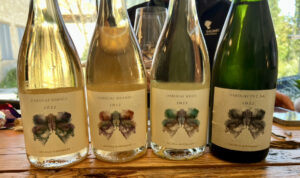 Château D’Arveyres, Bordeaux, 2019 [mevushal]
Château D’Arveyres, Bordeaux, 2019 [mevushal]- Château Forcas Dupre, Listrac Medoc, 2020
- Château Lamothe-Cissac Haut-Médoc, 2019
- Château Meilhan, Medoc, 2020 [US]
- Château Royaumont, Lalande de Pomerol, 2019
- Christophe Patrice, Gendraud Patrice, Chablis, 2020 [US]
- Covenant, Landsman, Pinot Noir, 2021
- Covenant, Red C, Rose, 2022 (also 2022 Viognier)
- Covenant, The Tribe, Chardonnay, 2021 (also 2022 Red C Sauvignon Blanc)
- Dalton, Alma, Rose, 2022
- Dalton, Asufa, Coast to Coast, 2019
- Dalton, Reserve, Sauvignon Blanc, 2021
- Domaine du Haut-Montlong Les Hauts des Noilettes, Vieilles Vignes, Monbazillac, 2020 [US]
- Domaine Guillerault Fargette, Sancerre, 2020
- Drimia, Sauvignon Blanc, 2021 [Israel]
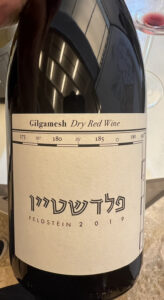 ElviWines, Cava, Brut, N.V.
ElviWines, Cava, Brut, N.V.- ElviWines, Herenza, Rioja (Crianza), 2018 (Black Label)
- Feldstein, Dabuki, 2022 (also 2021 Roussanne) [Israel]
- Feldstein, Gilgamesh, 2019 [Israel]
- Feudi del Pisciotto, Merlot, Sicily, 2019
- Five Stones, D V G, White, 2022 (also 2022 Rose)
- Flam, Classico, 2021
- Golan Heights Winery, Gilgal (Gamla), Brut, N.V.
- Golan Heights Winery, Yarden, Syrah, 2019
- Goose Bay, Pinot Grigio, 2022 (also 2021 Chardonnay) [mevushal]
- Goose Bay, Sauvignon Blanc, 2021 [mevushal]
- Gush Etzion, Lone Oak, Viognier, 2021 (also 2019 Cabernet Franc)
- Gush Etzion, Spring Valley, GSM, 2021
- Hagafen, Pinot Noir, Coombsville, 2021 [mevushal]
- Hajdu, Pinot Blanc, 2022 [US]
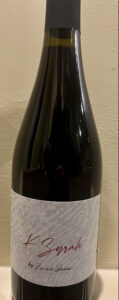 Herzberg, Village, 2020 (also Reserve 2021)
Herzberg, Village, 2020 (also Reserve 2021)- Herzog, Special Reserve, Cabernet Sauvignon, Alexander Valley, 2020 (also 2020 Napa) [mevushal]
- Herzog, Variations, Cabernet Sauvignon, Five, 2020 (also 2020 American Oak) [mevushal]
- Invei, Malbec, Rose, 2021 [US]
- K Syrah, by Zev Dunie, Syrah, 2019 [Israel]
- Matar, Stratus, 2019
- Pescaja, Solei Terre Alfieri, Arneis, 2021
- Pinto, Rose, 2022 (also the 2021 White Sands) [both Israel]
- Psagot, Sauvignon Blanc, 2020 (also Viognier)
- Psagot, Sinai, Red, 2021 [mevushal]
- Ramon Cardova Albarino, 2020
- Recanati, Gris de Marselan, Rose, 2022
- Recanati, Single Vineyard, Chardonnay, Manara, 2020
- Segal, Beta, Rose, 2022 (also 2022 “Other Red”) [both Israel]
- Segal, Wild Fermentation, Chardonnay, 2019 (also 2019 Native Marawi)
- Sheldrake Point, Dry Riesling, Finger Lakes, 2021
- Shiloh, Legend, Fiddler, 2020 (also 2020 Privilege) [both mevushal]
- Shiloh, Shor, Merlot, 2020 [mevushal]
- Shirah, One | Two Punch, 2019
- Shiv’im, Red, 2020 [Israel]
- Tabor, Single Vineyard, Marselan, 2019
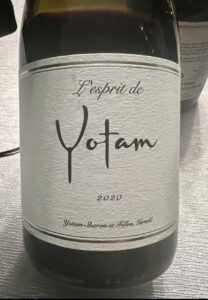 Teperberg, Essence, Cabernet Sauvignon, 2018
Teperberg, Essence, Cabernet Sauvignon, 2018- Teperberg, Essence, Pinot Gris, 2021 [Israel]
- Terra di Seta, Chianti Classico, Riserva, 2018
- Tinazzi, Desto, Cabernet Sauvignon, Costa Vento, 2018 [US / mevushal]
- Tura, Ridge, 2021
- Twin Suns, Reserve, Cabernet Sauvignon, 2021 [US / mevushal]
- Tzuba, Chardonnay, 2019
- Vitkin, Israel Journey, White, 2021 (also 2022 Rose)
- Weinstock, Cellar Select, Cabernet Sauvignon, Paso, 2020 [mevushal]
- YA Winery, by Yossi Ashkenazi, Kerem Ben Zimra, Sauvignon Blanc, 2021
- Ya’acov Oryah, Light from Darkness, 2022
- Yaffo, Hommage (Reserve), Malbec, 2021
- Yaffo, Hommage (Reserve), Viognier, 2021 (also 2021 Chardonnay)
- Yatir, Darom, White, 2021
- Yatir, Mount Amsa, White, 2020
- Yotam Sharon Wines, L’esprit de Yotam, Red, 2020 (also 2021 Cuvee Vera)
$35 – $55

While a lot of good options sit in this category, many of them really should be priced in the lower range but have crept up in price for no justifiable reason. It’s harder to sell wines in this price range than the one above or below it. It’s also nearly impossible to find a YH Best Buy on this list. As with most higher-end wines, especially those with a year or more of barrel aging, these need time to open (often the current vintage should be regulated to a few years of aging since it simply isn’t ready for primetime). In any event, do yourself a favor and get a decanter to ensure that you are obtaining maximum benefit from these wines if you don’t or cannot cellar them before enjoying.
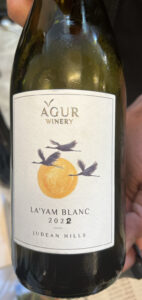
-
-
- Agur, Layam, Blanc, 2022
- Bat-Shlomo, Regavim, 2019
- Carmel, Mediterranean, 2019
- Cellar de Capçanes, La Flor del Flor de Primavera, Samso, 2017
- Cellar de Capçanes, Peraj Ha’Abib, Montsant, 2021 [mevushal]
- Champagne Bonnet-Ponson, Brut, n.v. [US]
- Champagne Drappier, Brut Nature, Zero Dosage, Rose, N.V.
- Champagne Drappier, Carte D’ Or, Brut, N.V.
- Château Guiraud, G, 2019 (Dry)
- Château Hautville, Saint-Estephe, 2021
- Château Rollan de By, Medoc, 2019 [mevushal]
- Château Tour Seran, Medoc, 2019 [mevushal]
- Covenant, Lavan, Chardonnay, 2021
- Flam, White, 2022 (white label; different than the Flam Blanc)
- Golan Heights Winery, Yarden, 2T, 2019
- Golan Heights Winery, Yarden, Brut, Rose, 2016
 Gvaot, Dances in White, 2022 (also 2022 Rose)
Gvaot, Dances in White, 2022 (also 2022 Rose)- Gvaot, Gofna Reserve, Cabernet Sauvignon, 2020
- Hagafen, Merlot, Napa Valley, 2018 [mevushal]
- Hagafen, Prix Reserve, Merlot, 2018 [mevushal]
- Hagafen, Prix Reserve, Sauvignon Blanc, 2018 (also the 2018 Syrah) [both mevushal]
- Hajdu, Barbera, 2021 (also 2021 Tannat) [US]
- Herzog, Special Edition, Chardonnay, Chalk Hill, 2021 [mevushal]
- Herzog, Special Reserve, Quartet, 2020 (also 2020 Lake County) [both mevushal]
- J. De Villebois, Sancerre, Silex, 2021 [US]
- Jean Marc Brun Bourgogne Hautes-Cotes de Nuits, 2021 [US]
- Jean-Paul Seguin, Sancerre, Cuvee Tradition, 2020 [US]
- Jean-Pierre Bailly, Pouilly-Fume, 2021 [US]
- Kishor Vineyards, GSM, 2020 (also 2021 Mourvèdre)
- Kishor Vineyards, Riesling, 2021 [Israel]
- Kishor Vineyards, White Kishor, 2022
- L’enclos, Vin Rouge Sec, 2020 (personal wine by Olivier Fratty – Barkan’s new head winemaker) [Israel]
- Les Marrionniers, Chablis, 2021 [mevushal] (also the 2020 Premier Cru)
- Les Roches de Yon-Figeac, Saint-Émilion, 2020
- Midbar, Grenache, 2020 [Israel]
- Netofa, Latour, White, 2020
- Netofa, Tel Qasser, Red, 2019 (also 2019 White)
 Pe’er Winery, Black Sheep, Red Blend, 2019 [Israel]
Pe’er Winery, Black Sheep, Red Blend, 2019 [Israel]- Pescaja, Soliter, Barbera d’Asti, 2020 [US]
- Recanati, Mediterranean Reserve, Wild Carignan, 2020 (also 2020 Petite Sirah)
- Rocca di Frassinello, Le Sughere di Frassinello, Toscana, 2020 [US]
- Segal, Whole Cluster, Pinot Noir, 2018
- Shiloh, Secret Reserve, Petite Sirah, 2019 [mevushal] (also Merlot 2019)
- Shirah, Coalition, 2019
- Shiran, Semillon, 2021 (also the 2020 Soprano)
- Shiran, The Song of the Birds, 2020
- Stoudemire, Reserve, Cabernet Sauvignon, 2019
- Terra di Seta, Chianti Classico, Gran Selezione, Assai, 2016
- Tzora, Judean Hills, White, 2021
- Tzora, Shoresh, Red, 2021 (also 2021 Shoresh White)
- Vitkin, Carignan, 2019 (also 2019 Petite Sirah & 2020 Pinot Noir)
- Vitkin, Collector’s Edition, Grenache Blanc, 2020
- Vitkin, Collector’s Edition, Grenache Noir, 2019 [Israel]
- Ya’acov Oryah, Alpha Omega, SMLH Viognier, 2021(also 2021 Gewürztraminer)
- Ya’acov Oryah, Black Pinecone, Pinot Noir, 2019 [Israel]
- Ya’acov Oryah, Valley of the Hunters, 2017 [Israel]
-
Over $55
Over the decade of producing the Guide, many deserving wines were repeatedly excluded because they were priced over $50 and didn’t quite make the exalted “Moshiach Wine” club. Whether any particular wine is “worth it” is a subjective matter with a newsletter all to itself, these are great wines that will bring great pleasure while properly honoring your Pesach experience. Even more than the prior tier, proper aeration and cellaring will have a huge impact of extracting maximum pleasure from these wines.
-
 Bat-Shlomo, Winemaker’s Collection, Collage, 2020
Bat-Shlomo, Winemaker’s Collection, Collage, 2020- Bernard Magrez, Servitude de la Tour Carnet, Haut-Medoc, 2017 [US]
- Castel, Raziel, 2019 (also the Raziel Sparkling Rose)
- Château Angelus Carillon de l’Angélus, 2020
- Château Bellefont Belcier, Saint Emilion, 2020
- Château Bernard Magrez, Saint-Estephe, 2018 [US]
- Château Clarke, Baron Edmond de Rothschild, Listrac-Medoc, 2020
- Château Clement-Pichon, Haut-Medoc, 2020
- Château Fayat, Pomerol, 2020
- Château Haut-Breton Larigaudiere, Margaux, 2019
- Château Kirwan, Margaux, 2018 [US]
- Château Le Crock, Saint-Estephe, 2020 [mevushal]
- Château Leoville de Poyferre, Pavillon de Leoville Poyferre, Saint Julien, 2020
- Château Luchey-Halde, “S”, Pessac-Leognan, 2016 [US]
- Château Malartic Lagraviere, Pessac-Leognan, Blanc, 2020
- Château , Margaux, 2019
- Château Meyney, Saint-Estèphe, 2020
- Château Montviel, Pomerol, 2020
- Château Olivier, Pessac-Leognan, 2020
- Château Piada, Sauternes, 2020
- Château Sainte Marguerite, Cuvee Symphonie, Blanc, Cotes de Provence, 2021
- Covenant, Cabernet Sauvignon, 2020 (also 2020 Syrah)
 Covenant, Solomon, Sauvignon Blanc, 2020
Covenant, Solomon, Sauvignon Blanc, 2020- Domaine Aegerter, Volnay, 2020 [US]
- Domaine du Chateau Philippe le Hardi, Beaune, 2020
- Domaine de Chevalier, L’esprit de Chevalier, Graves, 2019
- ElviWines, Herenza, Rioja, Reserva, 2016 (also EL 26 2019)
- Golan Heights Winery, Yarden, Single Vineyard, Syrah, Bar’on, 2019
- Gvaot, Masada, 2020
- Herzog, Special Edition, Cabernet Sauvignon, Chalk Hill, 2019
- Jean-Philippe Marchand, Gevrey-Chambertin, 2019 (also 2019 Volnay)
- Jean-Philippe Marchand, Meursault, 2021
- Lueria, Gran Vital, 2018
- Mia Luce, CSM, 2020
- Shiran, Limited Edition, Carignan, 2020 (also the Limited Edition Tempranillo)
- Teperberg, Legacy, Cabernet Franc, 2018 (also 2018 Petite Sirah)
- Tzora, Misty Hills, 2019
- Valle Reale, San Calisto, Montepulciano D’Abruzzo, 2018
- Vignobles Mayard Le Hurlevent, Châteauneuf-du-Pape, 2020
- Yatir, Forest, 2019
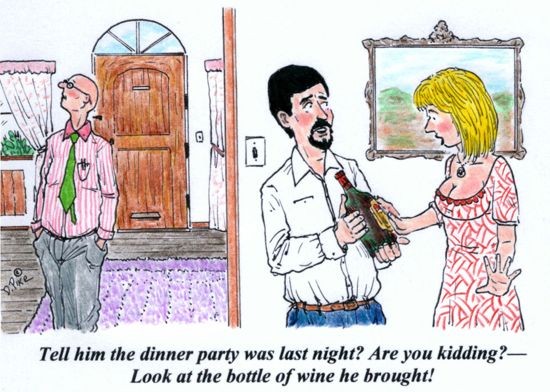 Moshiach wines are the really special wines that represent top-notch winemaking and plenty of patience on the consumer’s part to allow the wines the additional aging time in the bottle before the wine showcases all it can be (and the perfection intended by the winemaker). The word is derived from the fact that I’d be proud to serve these wines to the Moshiach were I ever so lucky as to have him grace my [Seder] table. Unfortunately, as our world continues to devolve into the pursuit for instant gratification, the terrible crime of consuming high-end wines shortly after they are purchased is a crying shame. While certain top tier wines are structured for immediate consumption and long-term aging, a few years of aging nearly always does good things for these wines and is worth the extra time, effort and patience. With the continued global expansion of my Rosh Chodesh Club concept (over 30 regular monthly meetings worldwide), more and more folks and getting to experience the immense pleasure derived from properly aged mature wines and with the recognition that a few years of storage can yield a stratospheric ROI, many more wines are finding their way to the cellar instead of the table upon purchase – which is a great thing!
Moshiach wines are the really special wines that represent top-notch winemaking and plenty of patience on the consumer’s part to allow the wines the additional aging time in the bottle before the wine showcases all it can be (and the perfection intended by the winemaker). The word is derived from the fact that I’d be proud to serve these wines to the Moshiach were I ever so lucky as to have him grace my [Seder] table. Unfortunately, as our world continues to devolve into the pursuit for instant gratification, the terrible crime of consuming high-end wines shortly after they are purchased is a crying shame. While certain top tier wines are structured for immediate consumption and long-term aging, a few years of aging nearly always does good things for these wines and is worth the extra time, effort and patience. With the continued global expansion of my Rosh Chodesh Club concept (over 30 regular monthly meetings worldwide), more and more folks and getting to experience the immense pleasure derived from properly aged mature wines and with the recognition that a few years of storage can yield a stratospheric ROI, many more wines are finding their way to the cellar instead of the table upon purchase – which is a great thing!
Please note that some of the Moshiach wines are very limited-edition wines that may not be easily available at your local retailer. While they may be a tad difficult to lay your hands on, I promise they are all worth the extra effort and additional expense. Additionally, and as is the case with many of the best wines, many become Moshiach wines only after a few years of aging. As older vintages (that have been stored properly) are somewhat difficult to come by the list includes the current vintage for many of the wines and, for a few the wines I have included (at least one of) the vintages that makes the wine fit for the Moshiach (buy the current vintages, store them properly for a few years and voila – house-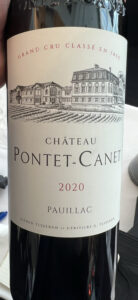 Moshiach wines).
Moshiach wines).
-
-
- Château Cantenac Brown, 2018 (2015)
- Château Giscours, Margaux, 2020 (2003)
- Château Lafon Rochet, Saint-Estèphe, 2020 (2003, 2010)
- Château Lascombes, Margaux, 2020 (2015)
- Château Léoville Poyferré, Saint Julien, 2020 (2000, 2005)
- Château Malartic Lagraviere, Pessac-Léognan, 2020 (2005)
- Château Pape Clement, Pessac-Leognan, 2017 (2014) [US]
- Château Pontet-Canet, Pauillac, 2020 (2003)
- Château Smith Haut Lafitte, Pessac-Léognan, 2019 (2009, 2014)
- Covenant, Lot 70, Solomon, Cabernet Sauvignon, 2019 (2011)
- Domaine Aegerter, Meursault, 2020 [US]
- Domaine de Montille, Pommard, Les Grands Epenots, 2020 (also Volnay & Puligny-Montrachet) [US]
- Domaine Roses Camille, Pomerol, 2015 (2005, 2011) [US]
- ElviWines, Clos Mesorah, 2019 (2010)
- Four Gates, Chardonnay, 2018 (2007, 2011) [US]
- Hajdu, Proprietary Red, 2020 (2010) [US]
- Herzog, Generation IX, Cabernet Sauvignon, Stags Leap, 2020 (2018)
- Herzog, Special Reserve, Cabernet Sauvignon, Clone Six, 2019 (2011)
- Marciano, Marciano Estate, Cabernet Sauvignon, 20202 [US]
- Yaacov Oryah, Old Musketeer, Sweet White Wine, 2008 (Ten Year Release) [Israel / Shmita]
-
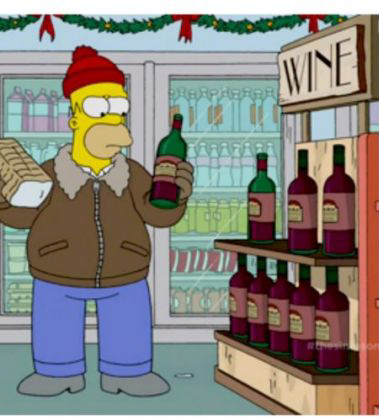 Rising prices have somewhat decimated this list, with many previously well-priced options moving up to the next price point. However, there are still a number of good options on this list, each of which yields a good and enjoyable wines, albeit these wines aren’t complex or cellar worthy (with a few exceptions). With oak barrels representing a significant percentage of a wine’s cost (actual cost and the time-value of aging), many of these wines have spent little to no time in oak contributing to their lower prices. Along with focusing on “
Rising prices have somewhat decimated this list, with many previously well-priced options moving up to the next price point. However, there are still a number of good options on this list, each of which yields a good and enjoyable wines, albeit these wines aren’t complex or cellar worthy (with a few exceptions). With oak barrels representing a significant percentage of a wine’s cost (actual cost and the time-value of aging), many of these wines have spent little to no time in oak contributing to their lower prices. Along with focusing on “

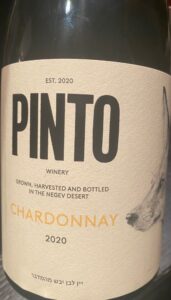

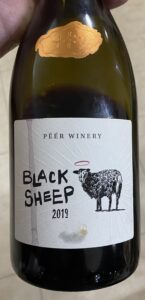

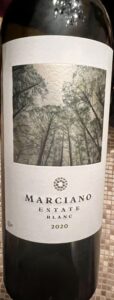
 Hagafen, Prix Reserve, Cabernet Sauvignon, MJT Block, 2016
Hagafen, Prix Reserve, Cabernet Sauvignon, MJT Block, 2016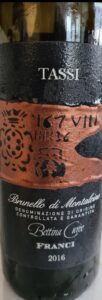 Château Giscours, Margaux, 2018 (2003)
Château Giscours, Margaux, 2018 (2003)
 quality (and value) of the appellation (like the
quality (and value) of the appellation (like the  Chablis’ northern location is a primary factor is the region’s defining characteristics of dry white wines loaded with flinty minerals and backed by vibrant and crisp acidity, Chablis wines present a style utterly distinct form the majority of other Burgundian white wines. They are generally lighter-bodied and less richly flavored than other White burgundies, showcasing a dryer and more vibrantly fresh palate. Other than Grand Cru (and certain Premier Cru) wines, the majority of Chablis are unoaked helping drive these characteristics.
Chablis’ northern location is a primary factor is the region’s defining characteristics of dry white wines loaded with flinty minerals and backed by vibrant and crisp acidity, Chablis wines present a style utterly distinct form the majority of other Burgundian white wines. They are generally lighter-bodied and less richly flavored than other White burgundies, showcasing a dryer and more vibrantly fresh palate. Other than Grand Cru (and certain Premier Cru) wines, the majority of Chablis are unoaked helping drive these characteristics. science, one simply chooses to enjoy what is poured.
science, one simply chooses to enjoy what is poured. Let’s Talk About the Weather
Let’s Talk About the Weather have higher acidity and more citrus notes, -like flavors. The wines are best enjoyed cold and within a year or two of release to champion the refreshing dry taste.
have higher acidity and more citrus notes, -like flavors. The wines are best enjoyed cold and within a year or two of release to champion the refreshing dry taste. to the rest of the Burgundy region. The 17th century brought interest from the English (then among the largest importing markets) and by the 19th century there were nearly 98,840 acres planted. Trouble for the region started in the late 19th century when railway growth allowed for the importation of cheaper wines and then
to the rest of the Burgundy region. The 17th century brought interest from the English (then among the largest importing markets) and by the 19th century there were nearly 98,840 acres planted. Trouble for the region started in the late 19th century when railway growth allowed for the importation of cheaper wines and then  The Wooden Touch
The Wooden Touch The best food pairings take advantage of the wine’s naturally high acidity to act as a palate cleanser and work well with delicately creamy sauces. Due to the lighter, more delicate taste profile of Chardonnay, you’ll want to stick to lighter meats and fishes as your base ingredient, including chicken, bass, halibut or cod. The high acidity and salinity work well with raw fish and sushi. Poor spring and fall weather often wreak havoc on vintages, but the impact of recent climate changes has helped improve vintages.
The best food pairings take advantage of the wine’s naturally high acidity to act as a palate cleanser and work well with delicately creamy sauces. Due to the lighter, more delicate taste profile of Chardonnay, you’ll want to stick to lighter meats and fishes as your base ingredient, including chicken, bass, halibut or cod. The high acidity and salinity work well with raw fish and sushi. Poor spring and fall weather often wreak havoc on vintages, but the impact of recent climate changes has helped improve vintages. Dampt Freres, Chablis, Premier Cru, Côte de Lechet, 2017: 2017 was a really nice year for Chablis and it’s reflected in this delicious wine (the few lower-ranked Chablis I tasted last year from them were also nice). The elegant nose is aristocratic with flinty minerals, tart green apple, yellow pear and subtle notes of gun smoke. Give the wine some air and you’ll be rewarded with a whiff of peach and white flowers with more green apple and minerals, all on an elegant light to medium bodied palate backed by lovely acidity and slight salinity. Lip-smacking and vibrant citrus add enjoyment and the minerals and warm spices all combine to present an elegant and lovely wine. Fresh and vibrant with sophistication and layers of complexity, this is a really lovely treat. 13% AbV. Drink now through 2024, perhaps longer.
Dampt Freres, Chablis, Premier Cru, Côte de Lechet, 2017: 2017 was a really nice year for Chablis and it’s reflected in this delicious wine (the few lower-ranked Chablis I tasted last year from them were also nice). The elegant nose is aristocratic with flinty minerals, tart green apple, yellow pear and subtle notes of gun smoke. Give the wine some air and you’ll be rewarded with a whiff of peach and white flowers with more green apple and minerals, all on an elegant light to medium bodied palate backed by lovely acidity and slight salinity. Lip-smacking and vibrant citrus add enjoyment and the minerals and warm spices all combine to present an elegant and lovely wine. Fresh and vibrant with sophistication and layers of complexity, this is a really lovely treat. 13% AbV. Drink now through 2024, perhaps longer. Dampt Freres, Chablis, Premier Cru, Côte de Lechet, 2018: The quality winemaking skill is evident in this wine, despite suffering through a pretty down vintage for the region (especially after a recent slate of above average years). Presenting overall less vibrant with fuller body and bolder fruit notes, the wine showcases the same elegant structure and balance evident in the 2017. Backed by good acidity and well balanced, the wine shows passion fruit, tropical notes and citrus with flinty minerals and notes of wet river rock and fresh-cut hay along with warm spices and a whiff of flowers that emerges more with time. Less layered and complex than the 2017, the wine is very nice and provides a lovely and enjoyable experience, especially when contrasted to some of the heavier expressions of Chardonnay (that also have their place).13. AbV. Drink now through 2023.
Dampt Freres, Chablis, Premier Cru, Côte de Lechet, 2018: The quality winemaking skill is evident in this wine, despite suffering through a pretty down vintage for the region (especially after a recent slate of above average years). Presenting overall less vibrant with fuller body and bolder fruit notes, the wine showcases the same elegant structure and balance evident in the 2017. Backed by good acidity and well balanced, the wine shows passion fruit, tropical notes and citrus with flinty minerals and notes of wet river rock and fresh-cut hay along with warm spices and a whiff of flowers that emerges more with time. Less layered and complex than the 2017, the wine is very nice and provides a lovely and enjoyable experience, especially when contrasted to some of the heavier expressions of Chardonnay (that also have their place).13. AbV. Drink now through 2023. Dampt Freres, Chablis, Grand Cru, Les Preuses, 2018: Given how lovely this wine is, I would love to taste the 2017 Grand Cru (although I don’t believe it was made kosher). Rich, expressive and aromatic, the wine showcases aromas of tart apple, pear and a subtle expression of tropical fruit with the flinty minerals providing nice backdrop and floral notes adding complexity. The medium bodied palate is rich and elegant, backed with supremely well-balanced acidity that lifts the palate and keeps things fresh and vibrant. Lovely citrus, notes of smoke and herbacousness all provide solid supporting roles, adding nuanced complexity that tantalizes as the wine evolves in your glass. Really great experience. 13.5% AbV. Drink now through 2025, perhaps longer.
Dampt Freres, Chablis, Grand Cru, Les Preuses, 2018: Given how lovely this wine is, I would love to taste the 2017 Grand Cru (although I don’t believe it was made kosher). Rich, expressive and aromatic, the wine showcases aromas of tart apple, pear and a subtle expression of tropical fruit with the flinty minerals providing nice backdrop and floral notes adding complexity. The medium bodied palate is rich and elegant, backed with supremely well-balanced acidity that lifts the palate and keeps things fresh and vibrant. Lovely citrus, notes of smoke and herbacousness all provide solid supporting roles, adding nuanced complexity that tantalizes as the wine evolves in your glass. Really great experience. 13.5% AbV. Drink now through 2025, perhaps longer. Domaine Les Marronniers, Chablis, 2018: A lovely and well-made Chablis, presenting well if slightly one-dimensional. Some rich minerals and tart green apple on the aromatic yet subtle nose with salinity and good acidity backing up the light to medium bodied palate. With some air the wine presents a whiff of orange blossom, iodine and flint along with slightly bitter smokiness that adds nuance. Sweet and somewhat tropical fruit on the mid palate along with good acidity yields a nice and refreshing wine with notes of toasted almonds and more citrus on the medium finish. Fermented with native yeasts, the wine clocks in at 13.5% AbV and is mevushal as well. Drink now and over the next 12 months.
Domaine Les Marronniers, Chablis, 2018: A lovely and well-made Chablis, presenting well if slightly one-dimensional. Some rich minerals and tart green apple on the aromatic yet subtle nose with salinity and good acidity backing up the light to medium bodied palate. With some air the wine presents a whiff of orange blossom, iodine and flint along with slightly bitter smokiness that adds nuance. Sweet and somewhat tropical fruit on the mid palate along with good acidity yields a nice and refreshing wine with notes of toasted almonds and more citrus on the medium finish. Fermented with native yeasts, the wine clocks in at 13.5% AbV and is mevushal as well. Drink now and over the next 12 months. Domaine Les Marronniers, Chablis, Premier Cru, Côte de Jouan, 2018: Elegant with a more vibrant and complex palate than the Chablis above. Sourced from 30-year-old vines and fermented with native yeasts, the wine showcases lovely green apple, yellow pear and white flows on a medium bodied palate with great acidity keeping this fresh. Flint minerals are evident as a backdrop to the rich and medium bodied supple palate, with more flint and orange notes added to the mix. 14.5% AbV is evident with the bigger body and heftier structure. Along with a more pronounced oak backbone. Well balanced, round and mouth-filling – this is an enjoyable wine. Drink now through 2022.
Domaine Les Marronniers, Chablis, Premier Cru, Côte de Jouan, 2018: Elegant with a more vibrant and complex palate than the Chablis above. Sourced from 30-year-old vines and fermented with native yeasts, the wine showcases lovely green apple, yellow pear and white flows on a medium bodied palate with great acidity keeping this fresh. Flint minerals are evident as a backdrop to the rich and medium bodied supple palate, with more flint and orange notes added to the mix. 14.5% AbV is evident with the bigger body and heftier structure. Along with a more pronounced oak backbone. Well balanced, round and mouth-filling – this is an enjoyable wine. Drink now through 2022.
 manner and our obligation to assume the moral and ethical responsibilities to others of free men. Given the unique times we are living through, I wanted to share a quick personal thought I had in this regard (if not of interest, feel free to skip to the meat of the newsletter at the bottom – my Pesach recommendations).
manner and our obligation to assume the moral and ethical responsibilities to others of free men. Given the unique times we are living through, I wanted to share a quick personal thought I had in this regard (if not of interest, feel free to skip to the meat of the newsletter at the bottom – my Pesach recommendations). Every year we talk about the elevated stress levels brought on by cooking commercial grade levels of brisket and matzah balls while attempting to eradicate every speck of dirt from the inside of your oven with a toothbrush and how wine selection shouldn’t be an added source of stress. While each and every one of us is already dealing with unimaginable stress levels brought on by the pandemic, I feel more strongly than ever before that wine selection should be as easy, simple and enjoyable as possible. However, as this guide is used by most readers throughout the year as a benchmark for which wines to acquire and all the potential pitfalls remain (and then some), we are going to remain focused on the usual matters the guide is mean to help alleviate.
Every year we talk about the elevated stress levels brought on by cooking commercial grade levels of brisket and matzah balls while attempting to eradicate every speck of dirt from the inside of your oven with a toothbrush and how wine selection shouldn’t be an added source of stress. While each and every one of us is already dealing with unimaginable stress levels brought on by the pandemic, I feel more strongly than ever before that wine selection should be as easy, simple and enjoyable as possible. However, as this guide is used by most readers throughout the year as a benchmark for which wines to acquire and all the potential pitfalls remain (and then some), we are going to remain focused on the usual matters the guide is mean to help alleviate. With wine such an integral part of the Pesach experience, the massive number of choices can create a particularly stressful shopping experience as one contemplates the near-endless number of choices on the shelves or webpage of your favorite retailer. Exacerbating the issue are several mitigating circumstances including the sheer number of mediocre-at-best available wines (along with an unacceptable amount of true
With wine such an integral part of the Pesach experience, the massive number of choices can create a particularly stressful shopping experience as one contemplates the near-endless number of choices on the shelves or webpage of your favorite retailer. Exacerbating the issue are several mitigating circumstances including the sheer number of mediocre-at-best available wines (along with an unacceptable amount of true 

 Despite occupying a top spot on any oenophile’s list of favorite customs, the tradition to consume four full cups of wine at the seder brings a host of potential issues, whose solutions can require a bit of advance thought and planning.
Despite occupying a top spot on any oenophile’s list of favorite customs, the tradition to consume four full cups of wine at the seder brings a host of potential issues, whose solutions can require a bit of advance thought and planning. With the seder representing one of the most important meals on the Jewish calendar, people try to have the nicest (and typically the most expensive) wines possible, creating yet another potential conundrum. Despite being among the kosher wine world’s best, the currently available high-end wines from Bordeaux, Israel and California are unlikely to be properly appreciated giving the hurried manner in which most of the Seder’s four cups are mandated to be consumed. Many of the better wines are full-bodied, oak aged and boldly flavored, attributes not very conducive to seder drinking. Between the empty stomach with which most people approach the first two cups, the halachik requirement to consume nearly an entire cup of wine rather rapidly and the added stress under which your seder participants are likely to be operating this year; most sedarim are unlikely to offer ideal conditions for enjoying such magnificent wines. That said, with current circumstances causing unprecedented change to our lives, including religious customs, if your current circumstances allow for a leisurely seder enhanced by the finest wines in your cellar (including if you are spending seder physically alone this year) – go for it. The spiritual aspects of wine sanctifying our table and experience would make using your best bottles to elevate the exalted experience the seder is meant to be as good a use of it as one could imagine.
With the seder representing one of the most important meals on the Jewish calendar, people try to have the nicest (and typically the most expensive) wines possible, creating yet another potential conundrum. Despite being among the kosher wine world’s best, the currently available high-end wines from Bordeaux, Israel and California are unlikely to be properly appreciated giving the hurried manner in which most of the Seder’s four cups are mandated to be consumed. Many of the better wines are full-bodied, oak aged and boldly flavored, attributes not very conducive to seder drinking. Between the empty stomach with which most people approach the first two cups, the halachik requirement to consume nearly an entire cup of wine rather rapidly and the added stress under which your seder participants are likely to be operating this year; most sedarim are unlikely to offer ideal conditions for enjoying such magnificent wines. That said, with current circumstances causing unprecedented change to our lives, including religious customs, if your current circumstances allow for a leisurely seder enhanced by the finest wines in your cellar (including if you are spending seder physically alone this year) – go for it. The spiritual aspects of wine sanctifying our table and experience would make using your best bottles to elevate the exalted experience the seder is meant to be as good a use of it as one could imagine. many options are already available. I have yet to taste all of the 60 samples or so waiting for me, but in anticipation of the guide tasted through a dozen or so to choose a few recommendable options for the guide (even with quality continuing to dip over the years, there are some worthy choices).
many options are already available. I have yet to taste all of the 60 samples or so waiting for me, but in anticipation of the guide tasted through a dozen or so to choose a few recommendable options for the guide (even with quality continuing to dip over the years, there are some worthy choices). While a number of wines from this tier have moved up one level due to increased prices, this range includes many good, enjoyable wines. With few exceptions, these wines aren’t complex or cellar worthy. With oak barrels representing a significant percentage of a wine’s cost (actual cost and the time-value of aging), many of these wines have spent little to no time in oak (although oak chips can provide certain benefits without the heavy costs) contributing to their lower prices. Along with focusing on “
While a number of wines from this tier have moved up one level due to increased prices, this range includes many good, enjoyable wines. With few exceptions, these wines aren’t complex or cellar worthy. With oak barrels representing a significant percentage of a wine’s cost (actual cost and the time-value of aging), many of these wines have spent little to no time in oak (although oak chips can provide certain benefits without the heavy costs) contributing to their lower prices. Along with focusing on “ ground at affordable. While most great wines remain over $30, there are plenty of great ones here. In general, I find Carmel, Dalton, ElviWines, the Golan Heights Winery, Recanati and the wines under Herzog’s Special Reserve label to be consistent players in price range.
ground at affordable. While most great wines remain over $30, there are plenty of great ones here. In general, I find Carmel, Dalton, ElviWines, the Golan Heights Winery, Recanati and the wines under Herzog’s Special Reserve label to be consistent players in price range. Moshiach wines are the really special wines that represent top-notch winemaking and plenty of patience on the consumer’s part to allow the wines the additional aging time in the bottle before the wine showcases all it can be (and the perfection intended by the winemaker). Unfortunately, as our world continues to devolve into the pursuit for instant gratification, the terrible crime of consuming high-end wines shortly after they are purchased is a crying shame. While certain top tier wines are structured for immediate consumption and long-term aging, a few years of aging nearly always does good things for these wines and is worth the extra time, effort and patience. With the continued global expansion of my
Moshiach wines are the really special wines that represent top-notch winemaking and plenty of patience on the consumer’s part to allow the wines the additional aging time in the bottle before the wine showcases all it can be (and the perfection intended by the winemaker). Unfortunately, as our world continues to devolve into the pursuit for instant gratification, the terrible crime of consuming high-end wines shortly after they are purchased is a crying shame. While certain top tier wines are structured for immediate consumption and long-term aging, a few years of aging nearly always does good things for these wines and is worth the extra time, effort and patience. With the continued global expansion of my 
 pleasure than some of their “near-perfect” brethren who are included in the former, more prestigious, list.
pleasure than some of their “near-perfect” brethren who are included in the former, more prestigious, list. While the total number of wines I tasted this year (2,033) is the lowest annual number of wines I have tasted in nearly a decade, it a reflection of Covid’s impact on my reach as opposed to the number of new wines launched, which continues to grow at an exponential pace. The world of kosher wine continues to evolve, grow and improve and there are great things ahead for the industry, while growing pains have also given rise to certain problems that need to be addressed (and will be discussed in the coming newsletter). After nearly a decade of having the list split relatively evenly between Israel, California, France and the rest of Europe, recent years have seen French wines assert their dominance pretty significantly. While a lot has to do with the resurgence of interest in kosher French wines, it also has to do with changes to the Israeli wine industry and the rising number of offerings from Spain and Italy. These and other developments will be discussed in depth in my coming newsletter covering the State of the Kosher Wine Industry.
While the total number of wines I tasted this year (2,033) is the lowest annual number of wines I have tasted in nearly a decade, it a reflection of Covid’s impact on my reach as opposed to the number of new wines launched, which continues to grow at an exponential pace. The world of kosher wine continues to evolve, grow and improve and there are great things ahead for the industry, while growing pains have also given rise to certain problems that need to be addressed (and will be discussed in the coming newsletter). After nearly a decade of having the list split relatively evenly between Israel, California, France and the rest of Europe, recent years have seen French wines assert their dominance pretty significantly. While a lot has to do with the resurgence of interest in kosher French wines, it also has to do with changes to the Israeli wine industry and the rising number of offerings from Spain and Italy. These and other developments will be discussed in depth in my coming newsletter covering the State of the Kosher Wine Industry. The Fine Print
The Fine Print
 Château Giscours, Margaux, 2017: After two terrific vintages the Chateau could be forgiven for resting on its laurels, but nothing would be further from the truth. I first tasted the wine when I visited the glorious winery and was delighted to find that my initial impression of excellence was justified when tasting it again recently. The wine opens with a dark, broodingly elegant and rich nose with loads of minerals, fresh-turned earth, garrigue, graphite, black pepper and near-sweet mostly black fruit and cassis with some flinty gun smoke adding nuance. A lithe medium to full bodied palate has loads more rich fruit that is well balanced with robust yet plush tannins and backed up by elegant acidity. Subtle notes of toasty oak, black pepper, earthy minerals, cured meat, fresh-cured tobacco and garrigue with hints of anise, dark chocolate lead into a long and luxurious finish loaded with more dark fruit, rich chocolate, cedar-box tobacco notes and a hint of herbal nuance which round out this elegant, focused and beautiful wine. 13% AbV. Drink 2024 through 2036.
Château Giscours, Margaux, 2017: After two terrific vintages the Chateau could be forgiven for resting on its laurels, but nothing would be further from the truth. I first tasted the wine when I visited the glorious winery and was delighted to find that my initial impression of excellence was justified when tasting it again recently. The wine opens with a dark, broodingly elegant and rich nose with loads of minerals, fresh-turned earth, garrigue, graphite, black pepper and near-sweet mostly black fruit and cassis with some flinty gun smoke adding nuance. A lithe medium to full bodied palate has loads more rich fruit that is well balanced with robust yet plush tannins and backed up by elegant acidity. Subtle notes of toasty oak, black pepper, earthy minerals, cured meat, fresh-cured tobacco and garrigue with hints of anise, dark chocolate lead into a long and luxurious finish loaded with more dark fruit, rich chocolate, cedar-box tobacco notes and a hint of herbal nuance which round out this elegant, focused and beautiful wine. 13% AbV. Drink 2024 through 2036. Château Guiraud, Sauternes, 2017: More than 15 years have passed since the last kosher vintage of this first-growth Sauternes (made kosher for three consecutive years 1999-2001), however given the long-term ageability of Sauternes, we are still enjoying the fruits of those labors today (albeit as they are gracefully sloping off their peak). Still a baby at this stage, without any of the wonderful funk that so typifies the Sauternes botrytis, if you look closely you can already see the glorious wine it will become. Loads of candied orange, white flowers, fresh-peeled ginger root, dried summer stone fruit, heather, honeysuckle and a whiff of minerals with some air, the nose intoxicates already with its heady aromas. The medium bodied wine is loaded with rich melon, more dried fruit, clover honey, more floral notes and plenty of honeysuckle all wrapped around a core of judicious acidity that promises to keep things together for decades. 14% AbV. Drink now (if you must with an hour of decanting), but better to giver the wine until at least 2025 before enjoying through 2040, likely longer.
Château Guiraud, Sauternes, 2017: More than 15 years have passed since the last kosher vintage of this first-growth Sauternes (made kosher for three consecutive years 1999-2001), however given the long-term ageability of Sauternes, we are still enjoying the fruits of those labors today (albeit as they are gracefully sloping off their peak). Still a baby at this stage, without any of the wonderful funk that so typifies the Sauternes botrytis, if you look closely you can already see the glorious wine it will become. Loads of candied orange, white flowers, fresh-peeled ginger root, dried summer stone fruit, heather, honeysuckle and a whiff of minerals with some air, the nose intoxicates already with its heady aromas. The medium bodied wine is loaded with rich melon, more dried fruit, clover honey, more floral notes and plenty of honeysuckle all wrapped around a core of judicious acidity that promises to keep things together for decades. 14% AbV. Drink now (if you must with an hour of decanting), but better to giver the wine until at least 2025 before enjoying through 2040, likely longer. Château Lafon-Rochet, Saint-Estèphe, 2017: One of the lessor known superstars of the kosher wine world, this is likely due to the fact that it has only been made kosher for a few vintages, spread apart over years, with distribution limited as well. 2010 was the last vintage it was made, one of the only top tier Bordeaux wines made kosher during that spectacular Bordeaux vintage. Comprised of 55% Cabernet Sauvignon and 45% Merlot, the wine showcases less obvious fruit on opening and presents as less approachable on release than its voluptuous older sibling, but its overwhelming elegance and sophistication easily make up for that. Like most higher-end Bordeaux in this price range, the wine obviously needs years of cellaring or hours of decanting before it will show any of its potential, but the structure and balance are there and with some air, the wine starts to emerge and the elegant nose shrugs off its hibernation and reveals earthy and smoky notes enveloping cigar-box cedar, herbacousness, black pepper, saline minerals, savory notes of grilled meat, graphite along with black fruit that evolves over time. The full bodied palate is backed by gripping tannins that provide a supple backbone to the fruit and smoked meat notes with some near-sweet notes of rich dark chocolate and roasted espresso beans lingering on the extensive finish. Rich, deep and very elegant, the wine needs a lot of time, so make sure it gets what it deserves, and you won’t be disappointed. 13% AbV, drink 2024 through 2037.
Château Lafon-Rochet, Saint-Estèphe, 2017: One of the lessor known superstars of the kosher wine world, this is likely due to the fact that it has only been made kosher for a few vintages, spread apart over years, with distribution limited as well. 2010 was the last vintage it was made, one of the only top tier Bordeaux wines made kosher during that spectacular Bordeaux vintage. Comprised of 55% Cabernet Sauvignon and 45% Merlot, the wine showcases less obvious fruit on opening and presents as less approachable on release than its voluptuous older sibling, but its overwhelming elegance and sophistication easily make up for that. Like most higher-end Bordeaux in this price range, the wine obviously needs years of cellaring or hours of decanting before it will show any of its potential, but the structure and balance are there and with some air, the wine starts to emerge and the elegant nose shrugs off its hibernation and reveals earthy and smoky notes enveloping cigar-box cedar, herbacousness, black pepper, saline minerals, savory notes of grilled meat, graphite along with black fruit that evolves over time. The full bodied palate is backed by gripping tannins that provide a supple backbone to the fruit and smoked meat notes with some near-sweet notes of rich dark chocolate and roasted espresso beans lingering on the extensive finish. Rich, deep and very elegant, the wine needs a lot of time, so make sure it gets what it deserves, and you won’t be disappointed. 13% AbV, drink 2024 through 2037. Domaine du Castel, Grand Vin, 2018: Long a symbol of Israel’s [new] wine revolution and despite the somewhat pretentious moniker, a reigning champ among Israel’s top wines, wine continues to symbolize an Old-World winemaking style wrapped in New Work materials. The nose is deep, dense and extracted with crushed near-sweet forest berries, red cherries, rich cassis, earthy minerals, black pepper, cigar-box cedar wood, sun-kissed Mediterranean herbs and a typical herbacousness backed by toasty oak. The full-bodied extracted palate is loaded to bear with rich near-sweet, controlled fruit with spicy oak, more cigar notes, roasted espresso, rich baker’s chocolate and some bitter anise adding nuance before folding into the long finish. A blend of 50% Cabernet Sauvignon, 40% Merlot, and 10% Petit Verdot, the wine clocks in at 14.5% AbV. At this point, the wine needs two hours of decanting before it opens up sufficiently to enjoy so better to wait till 2022 and then enjoy through 2027, maybe longer.
Domaine du Castel, Grand Vin, 2018: Long a symbol of Israel’s [new] wine revolution and despite the somewhat pretentious moniker, a reigning champ among Israel’s top wines, wine continues to symbolize an Old-World winemaking style wrapped in New Work materials. The nose is deep, dense and extracted with crushed near-sweet forest berries, red cherries, rich cassis, earthy minerals, black pepper, cigar-box cedar wood, sun-kissed Mediterranean herbs and a typical herbacousness backed by toasty oak. The full-bodied extracted palate is loaded to bear with rich near-sweet, controlled fruit with spicy oak, more cigar notes, roasted espresso, rich baker’s chocolate and some bitter anise adding nuance before folding into the long finish. A blend of 50% Cabernet Sauvignon, 40% Merlot, and 10% Petit Verdot, the wine clocks in at 14.5% AbV. At this point, the wine needs two hours of decanting before it opens up sufficiently to enjoy so better to wait till 2022 and then enjoy through 2027, maybe longer. Jean-Philippe Marchand, Volnay, Sous Luret, 2017: Like
Jean-Philippe Marchand, Volnay, Sous Luret, 2017: Like  Marciano, Marciano Estate, Cabernet Sauvignon, 2017: Easily one of the most gorgeous wineries in the US,
Marciano, Marciano Estate, Cabernet Sauvignon, 2017: Easily one of the most gorgeous wineries in the US,  Terra di Seta, Chianti Classico, Gran Selezione, Assai, 2015: As would be expected from the flagship wine of any self-respecting Italian winery, the wine is closed and brooding and should be left alone for a few years. 100% Sangiovese which was aged in new French oak barrels for 24 months. At this stage, the only way to really appreciate what lies beneath is hours of decanting. Then you are rewarded with an expressive nose of dark plums, slightly sour cherries, roasted herbs, backed by earthy notes of truffles, brown spices, graphite, sweet cedar wood, smoke and hints of tar. The full bodied and extracted palate is plush, complex and layered, opening up over the course of many hours to reveal layers of extracted dark fruits, sweet herbs, saddle leather, tobacco and roasted espresso beans, all wrapped around impenetrable tannins and backed by lovely acidity. A long lingering finish showcases earthy minerals, smoke-tinged oak and more cigar-box notes. 15% AbV. Give it the time it needs, and you will be rewarded with elegance and excellence – a beautiful wine meant for sharing with friends. Drink 2023 through 2032 (if you decide to open now, give it at least three hours in the decanter).
Terra di Seta, Chianti Classico, Gran Selezione, Assai, 2015: As would be expected from the flagship wine of any self-respecting Italian winery, the wine is closed and brooding and should be left alone for a few years. 100% Sangiovese which was aged in new French oak barrels for 24 months. At this stage, the only way to really appreciate what lies beneath is hours of decanting. Then you are rewarded with an expressive nose of dark plums, slightly sour cherries, roasted herbs, backed by earthy notes of truffles, brown spices, graphite, sweet cedar wood, smoke and hints of tar. The full bodied and extracted palate is plush, complex and layered, opening up over the course of many hours to reveal layers of extracted dark fruits, sweet herbs, saddle leather, tobacco and roasted espresso beans, all wrapped around impenetrable tannins and backed by lovely acidity. A long lingering finish showcases earthy minerals, smoke-tinged oak and more cigar-box notes. 15% AbV. Give it the time it needs, and you will be rewarded with elegance and excellence – a beautiful wine meant for sharing with friends. Drink 2023 through 2032 (if you decide to open now, give it at least three hours in the decanter). Aura di Valerie, Amarone Della Valpolicella, DOCG, 2017: My first experience with this style of wine, so I was mostly guided by literature in prepping my expectations. One of Italy’s classic wine styles,
Aura di Valerie, Amarone Della Valpolicella, DOCG, 2017: My first experience with this style of wine, so I was mostly guided by literature in prepping my expectations. One of Italy’s classic wine styles,  Bergevin Lane, Cabernet Sauvignon, Walla Walla, 2018: One of the many welcome new projects benefiting kosher wine lovers (a topic to be discussed in my coming State of the Kosher Wine World), this 100% Cabernet Sauvignon comes from a well-known winery in Washington State and was aged in 33% new French oak for 12 months. Rich and delightful, the wine showcases extracted black fruit well balanced with good acidity and supple tannins. Green notes are flecked throughout along with cassis, cracked black pepper, violet, roasted espresso beans, mocha and fresh-rolled cigars. Well-worn saddle leather and earthy minerals are in the background but provide a subtle lift and nuanced complexity, matching the new-sweet and rich fruit and providing harmonious balance. Really a great first effort and a delicious wine in its own right. A reserve version is also being released so stay tunes. 14.8% AbV. Drink now through 2026, maybe longer.
Bergevin Lane, Cabernet Sauvignon, Walla Walla, 2018: One of the many welcome new projects benefiting kosher wine lovers (a topic to be discussed in my coming State of the Kosher Wine World), this 100% Cabernet Sauvignon comes from a well-known winery in Washington State and was aged in 33% new French oak for 12 months. Rich and delightful, the wine showcases extracted black fruit well balanced with good acidity and supple tannins. Green notes are flecked throughout along with cassis, cracked black pepper, violet, roasted espresso beans, mocha and fresh-rolled cigars. Well-worn saddle leather and earthy minerals are in the background but provide a subtle lift and nuanced complexity, matching the new-sweet and rich fruit and providing harmonious balance. Really a great first effort and a delicious wine in its own right. A reserve version is also being released so stay tunes. 14.8% AbV. Drink now through 2026, maybe longer. Dalton, Pet-Nat, 2020: One of my favorite underrated wineries, Dalton doesn’t seem to get the love is deserves as it continues to serve up well-made, well-priced and interesting wines across a broad spectrum of prices and genres. Whether the revised
Dalton, Pet-Nat, 2020: One of my favorite underrated wineries, Dalton doesn’t seem to get the love is deserves as it continues to serve up well-made, well-priced and interesting wines across a broad spectrum of prices and genres. Whether the revised  Matar, Blanc de Noir, Brut, NV: After many years of producing one of
Matar, Blanc de Noir, Brut, NV: After many years of producing one of  Padis Vineyards, Brilliance, 2018: Named for Steve Padis’ successful jewelry business than enabled him to pursue a passion of making wine, the first kosher run was released in 2012 with help from Ernie Weir and produced at Oxnard’s kosher facility (talk about collaboration). Historically I haven’t been a huge fan of the wine, but the 2018 vintage is easily the best yet and worthy of consideration. 100% Cabernet Sauvignon sourced from Padis’ Oak Knoll vineyards in Napa Valley, the wine is classic Napa Valley opulent Cabernet Sauvignon, but reflecting the good vintage year for the region and a steady winemaking hand. Rich blackberries, black cherries and cassis on the caressing nose along with some subtle forest floor, graphite, floral notes and a whiff of tar along with toasty oak. The opulent full-bodied palate is rich and luscious backed by supple tannins that carry the wine which showcases more extracted near-sweet dark fruit, toasty oak, rich chocolate notes, sweet cedar wood and fresh cured tobacco leaf. A bit lacking in depth and complexity, this is a well-made and delicious wine that will please most New World Cabernet Sauvignon lovers. Drink now through 2025, maybe a bit longer.
Padis Vineyards, Brilliance, 2018: Named for Steve Padis’ successful jewelry business than enabled him to pursue a passion of making wine, the first kosher run was released in 2012 with help from Ernie Weir and produced at Oxnard’s kosher facility (talk about collaboration). Historically I haven’t been a huge fan of the wine, but the 2018 vintage is easily the best yet and worthy of consideration. 100% Cabernet Sauvignon sourced from Padis’ Oak Knoll vineyards in Napa Valley, the wine is classic Napa Valley opulent Cabernet Sauvignon, but reflecting the good vintage year for the region and a steady winemaking hand. Rich blackberries, black cherries and cassis on the caressing nose along with some subtle forest floor, graphite, floral notes and a whiff of tar along with toasty oak. The opulent full-bodied palate is rich and luscious backed by supple tannins that carry the wine which showcases more extracted near-sweet dark fruit, toasty oak, rich chocolate notes, sweet cedar wood and fresh cured tobacco leaf. A bit lacking in depth and complexity, this is a well-made and delicious wine that will please most New World Cabernet Sauvignon lovers. Drink now through 2025, maybe a bit longer. Ramon Cardova, Old Vines, Reserva, Rioja, 2016: Historically producing entry level but nice-enough wines, the label started to take things to the next level a couple years ago with the introduction of a lovely Albariño and have further upped their game with the introduction of this Rioja Reserva. Sourced from the older vineyards of Ramon Bilbao’s Haro vineyards and fermented in large oak barrels, the wine presents another kosher Rioja Reserva option in addition to the terrific offering from ElviWines. Like the Italian expansion, I am happy to see new wines and producers expanding our already existing portfolio of great Spanish wines and hope the trend continues. The nose opens with deep brooding notes of rich sweet black forest berries with a good dose of blueberries added to the mix. Slightly toasty oak notes, roasted game meat, warm spices and balsamic vinegar add complexity to the nose which evolves as it spends time in the glass. The deep, extracted and rich full-bodied palate is somewhat of a beast, loaded with rich crushed blackberries, plums and other dark fruits along with flinty minerals, savory notes of cured Mediterranean olives, more warm spices, earthy mushrooms, graphite, freshly-paved asphalt, cured meat and dessert shrubbery adding nuanced complexity and depth. The finish lingers long. Really brilliant first efforts and looking forward to subsequent vintages (2018 and likely 2020). 14.5% AbV. At this point the wine greatly benefits from about an hour of decanting, and should cellar nicely through 2027, maybe longer.
Ramon Cardova, Old Vines, Reserva, Rioja, 2016: Historically producing entry level but nice-enough wines, the label started to take things to the next level a couple years ago with the introduction of a lovely Albariño and have further upped their game with the introduction of this Rioja Reserva. Sourced from the older vineyards of Ramon Bilbao’s Haro vineyards and fermented in large oak barrels, the wine presents another kosher Rioja Reserva option in addition to the terrific offering from ElviWines. Like the Italian expansion, I am happy to see new wines and producers expanding our already existing portfolio of great Spanish wines and hope the trend continues. The nose opens with deep brooding notes of rich sweet black forest berries with a good dose of blueberries added to the mix. Slightly toasty oak notes, roasted game meat, warm spices and balsamic vinegar add complexity to the nose which evolves as it spends time in the glass. The deep, extracted and rich full-bodied palate is somewhat of a beast, loaded with rich crushed blackberries, plums and other dark fruits along with flinty minerals, savory notes of cured Mediterranean olives, more warm spices, earthy mushrooms, graphite, freshly-paved asphalt, cured meat and dessert shrubbery adding nuanced complexity and depth. The finish lingers long. Really brilliant first efforts and looking forward to subsequent vintages (2018 and likely 2020). 14.5% AbV. At this point the wine greatly benefits from about an hour of decanting, and should cellar nicely through 2027, maybe longer. Tassi, Aqua Bona, Rosso, Montepulciano, Toscana, 2017: After many years of a very limited selection of high-end Italian kosher wines, the picture is changing dramatically with a new importer focusing on this neglected area of delight and this inaugural kosher release from well-known producer Tassi is a worthy member of the burgeoning portfolio (and his coming kosher Brunello is sure to excite as well). Despite lacking the DOCG demarcation of its non-kosher sibling (missing some of the stringent technical requirements), the wine is lovely, elegant and delicious and comprised of 100% Sangiovese. The nose presents with fresh notes of mostly dark fruit including sweet black cherries, smoky oak, anise and slightly roasted bitter herbs, earthy minerals and cured tobacco leaf. The rich medium to full bodied palate is elegant and expressive and backed by plush tannins. The palate packs in more rich black cherries and other mostly black forest fruits, along with earthy forest notes, more smoky oak, roasted meat and black truffles leading to a tension-driven lingering finish. 14% AbV, the wine is enjoyable now with 30-45 minutes of air and should develop nicely over the next 2-3 years and can be enjoyed through 2026.
Tassi, Aqua Bona, Rosso, Montepulciano, Toscana, 2017: After many years of a very limited selection of high-end Italian kosher wines, the picture is changing dramatically with a new importer focusing on this neglected area of delight and this inaugural kosher release from well-known producer Tassi is a worthy member of the burgeoning portfolio (and his coming kosher Brunello is sure to excite as well). Despite lacking the DOCG demarcation of its non-kosher sibling (missing some of the stringent technical requirements), the wine is lovely, elegant and delicious and comprised of 100% Sangiovese. The nose presents with fresh notes of mostly dark fruit including sweet black cherries, smoky oak, anise and slightly roasted bitter herbs, earthy minerals and cured tobacco leaf. The rich medium to full bodied palate is elegant and expressive and backed by plush tannins. The palate packs in more rich black cherries and other mostly black forest fruits, along with earthy forest notes, more smoky oak, roasted meat and black truffles leading to a tension-driven lingering finish. 14% AbV, the wine is enjoyable now with 30-45 minutes of air and should develop nicely over the next 2-3 years and can be enjoyed through 2026.
 dramatically as David determined ten acres was the most the land could accommodate while still producing the highest quality grapes.
dramatically as David determined ten acres was the most the land could accommodate while still producing the highest quality grapes.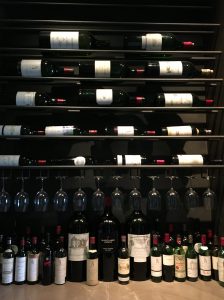 tasting room overlooks the barrel room, vineyards and an outdoor fireplace that enhances your entire experience. Maurice also planted olive trees from which the winery makes its own branded olive oil.
tasting room overlooks the barrel room, vineyards and an outdoor fireplace that enhances your entire experience. Maurice also planted olive trees from which the winery makes its own branded olive oil.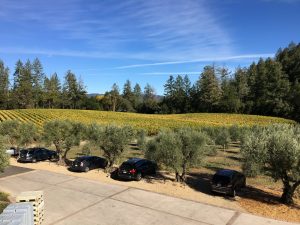 does double-duty as Maurice’s vacation home with lush grounds, tennis courts, a swimming pool and guest villas available for his family and friends. even the astoundingly beautiful tasting room where we sampled the wines is primarily used to host functions and special events (the entry way is stocked with some of the world’s greatest wines, all sourced from his private collection.
does double-duty as Maurice’s vacation home with lush grounds, tennis courts, a swimming pool and guest villas available for his family and friends. even the astoundingly beautiful tasting room where we sampled the wines is primarily used to host functions and special events (the entry way is stocked with some of the world’s greatest wines, all sourced from his private collection. percentage of Cabernet Franc than the Estate). Starting with the 2016 vintage, the winery expected to bottle a kosher version of the winery’s flagship Marciano Estate as well (sourced from a different parcel than the non-kosher). I tasted the wine from the barrel last year but no final determination had been made at that time.
percentage of Cabernet Franc than the Estate). Starting with the 2016 vintage, the winery expected to bottle a kosher version of the winery’s flagship Marciano Estate as well (sourced from a different parcel than the non-kosher). I tasted the wine from the barrel last year but no final determination had been made at that time. room. There we tasted a barrel of 2017 Cabernet Sauvignon likely destined for the Estate wine along with a few other barrels of Cabernet Sauvignon from the 2016 and 2017 vintages and one blended barrel of 2016 co-fermented Cabernet Sauvignon (85%) and Cabernet Franc (15%).
room. There we tasted a barrel of 2017 Cabernet Sauvignon likely destined for the Estate wine along with a few other barrels of Cabernet Sauvignon from the 2016 and 2017 vintages and one blended barrel of 2016 co-fermented Cabernet Sauvignon (85%) and Cabernet Franc (15%).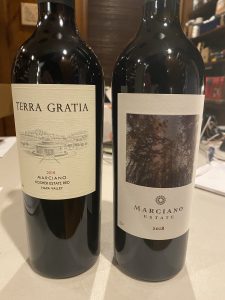 nuance, dark chocolate and was well balanced with subtle oak, good acidity and nicely integrating savory tannins. The elegance was upped for the 2014 version which was 100% Cabernet Sauvignon and had more black fruit and less new oak than the 2013, with the lower oak treatment noticeable with purer fruit, more minerals and cleaner lines. The 2015 was rich, expressive and voluptuous with lovely spices and subtle smokey notes – more complex and approachable than either of its two predecessors – it was my favorite of the three wines I tasted – all of which I enjoyed.
nuance, dark chocolate and was well balanced with subtle oak, good acidity and nicely integrating savory tannins. The elegance was upped for the 2014 version which was 100% Cabernet Sauvignon and had more black fruit and less new oak than the 2013, with the lower oak treatment noticeable with purer fruit, more minerals and cleaner lines. The 2015 was rich, expressive and voluptuous with lovely spices and subtle smokey notes – more complex and approachable than either of its two predecessors – it was my favorite of the three wines I tasted – all of which I enjoyed.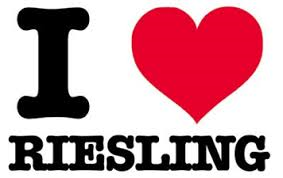
 Easily one of the world’s most underappreciated grapes, for the last century Riesling has also been one of the most polarizing. However Riesling goes back much further, with one of its first documented mentions being in the mid-1500s, when Riesling was included in the wine inventory of Count John IV of Katzenelnbogen. DNA testing has identified it as a cross between wild vines and Gouais Blanc, one of Western Europe’s oldest grape varieties, and its birthplace is thought to be Germany, somewhere along the ancient Rhine. Especially surprising given the grape’s acknowledged greatness, its etymology is shrouded in mystery, with no clear understanding of the name’s source. One theory is sourced from the old German word Rizan (to split) but no rationale is given.
Easily one of the world’s most underappreciated grapes, for the last century Riesling has also been one of the most polarizing. However Riesling goes back much further, with one of its first documented mentions being in the mid-1500s, when Riesling was included in the wine inventory of Count John IV of Katzenelnbogen. DNA testing has identified it as a cross between wild vines and Gouais Blanc, one of Western Europe’s oldest grape varieties, and its birthplace is thought to be Germany, somewhere along the ancient Rhine. Especially surprising given the grape’s acknowledged greatness, its etymology is shrouded in mystery, with no clear understanding of the name’s source. One theory is sourced from the old German word Rizan (to split) but no rationale is given. With natural high acidity, relatively low alcohol and abundant fruity and mineral notes in perfect balance, Riesling produces some of the world’s greatest white wines, many of which have an astounding ability to age for decades (a quality discovered as the wine rapidly curried favor with Germany’s noble and aristocratic classes who stockpiled it and found it lasting far longer than expected) regardless of their level of residual sugar or AbV. However, it is the grape’s terroir-reflective capabilities that are its greatest asset, contributing to its far-ranging global production and startlingly wide range of styles and dryness levels (one of the kosher Riesling producers – St. Urbans-Hof, produces nearly a dozen Rieslings annually, all in distinct styles). Similar to Chardonnay and Pinot Noir, Riesling is somewhat of a chameleon, taking on many of the characteristics of the soil and other terroir attributes of its given home. Where is diverges from its peer varietals is Riesling’s amazing ability to retain its defining characteristics regardless of its origin or the winemaking style utilized. Two additional areas in which Riesling stands along from its fellow chameleons is with respect to oak-aging, as Riesling almost never sees any oak (other than in rare occasions where it is gently aged in larger neutral barrels to add a bit of heft) and blending. With a racy personality, high acidity and such a lovely array of aromas, you will almost never find Riesling blended with any other grape varietals. Further distancing itself from Chardonnay, Riesling rarely undergoes malolactic fermentation which helps retain its trademark crisp acidity.
With natural high acidity, relatively low alcohol and abundant fruity and mineral notes in perfect balance, Riesling produces some of the world’s greatest white wines, many of which have an astounding ability to age for decades (a quality discovered as the wine rapidly curried favor with Germany’s noble and aristocratic classes who stockpiled it and found it lasting far longer than expected) regardless of their level of residual sugar or AbV. However, it is the grape’s terroir-reflective capabilities that are its greatest asset, contributing to its far-ranging global production and startlingly wide range of styles and dryness levels (one of the kosher Riesling producers – St. Urbans-Hof, produces nearly a dozen Rieslings annually, all in distinct styles). Similar to Chardonnay and Pinot Noir, Riesling is somewhat of a chameleon, taking on many of the characteristics of the soil and other terroir attributes of its given home. Where is diverges from its peer varietals is Riesling’s amazing ability to retain its defining characteristics regardless of its origin or the winemaking style utilized. Two additional areas in which Riesling stands along from its fellow chameleons is with respect to oak-aging, as Riesling almost never sees any oak (other than in rare occasions where it is gently aged in larger neutral barrels to add a bit of heft) and blending. With a racy personality, high acidity and such a lovely array of aromas, you will almost never find Riesling blended with any other grape varietals. Further distancing itself from Chardonnay, Riesling rarely undergoes malolactic fermentation which helps retain its trademark crisp acidity. Over the years, much of the Riesling produced tended sweeter, with certain levels of residual sugar viewed as necessary to balance the high acidity; leading to the inaccurate perception that Riesling was a sweet wine. While the high acidity and low alcohol make it great for dessert wines (and it has always been produced across a wide band of residual sugar levels (which remain a huge factor in the wine’s classification system – see below), Riesling’s characteristics make it one of the few grapes that can produce quality wine across the entire spectrum of sweetness, and has always been produced in dry versions with recent years seeing a huge upswing in the percentage of Rieslings fermented until they are bone dry (including the lovely version from Hagafen and the Kishor referenced below). The shift to dry has been so extreme that the majority of German Riesling produced these days is classified as dry (Trocken) or slightly off-dry (feinherb), leaving many traditionalists to lament the diminishing sweeter categories (especially Kabinett (sweet) and Spätlese (late-harvest) whose perception of sweetness was beautifully tempered by high-acidity and harmonious balance( see below for more on German wine classification). However, producers in the prime-growing Mosel appellations of Saar and Ruwer have held the line and continue to produce the fruity Rieslings of yesteryear with sufficient levels of residual sugar to please the neo-cons while yielding elegant and racy wines with gobs of balancing acidity (coincidentally or not, the Saar appellation is the source of the current crop of German Rieslings listed below).
Over the years, much of the Riesling produced tended sweeter, with certain levels of residual sugar viewed as necessary to balance the high acidity; leading to the inaccurate perception that Riesling was a sweet wine. While the high acidity and low alcohol make it great for dessert wines (and it has always been produced across a wide band of residual sugar levels (which remain a huge factor in the wine’s classification system – see below), Riesling’s characteristics make it one of the few grapes that can produce quality wine across the entire spectrum of sweetness, and has always been produced in dry versions with recent years seeing a huge upswing in the percentage of Rieslings fermented until they are bone dry (including the lovely version from Hagafen and the Kishor referenced below). The shift to dry has been so extreme that the majority of German Riesling produced these days is classified as dry (Trocken) or slightly off-dry (feinherb), leaving many traditionalists to lament the diminishing sweeter categories (especially Kabinett (sweet) and Spätlese (late-harvest) whose perception of sweetness was beautifully tempered by high-acidity and harmonious balance( see below for more on German wine classification). However, producers in the prime-growing Mosel appellations of Saar and Ruwer have held the line and continue to produce the fruity Rieslings of yesteryear with sufficient levels of residual sugar to please the neo-cons while yielding elegant and racy wines with gobs of balancing acidity (coincidentally or not, the Saar appellation is the source of the current crop of German Rieslings listed below). Maintaining such great balance between high-acidity levels and varying degrees of residual sugar is the primary factor in Riesling topping the food-friendly charts, enhanced by the lack of oak aging and lover alcohol levels with its elegantly voluptuous nose and array of flavors merely providing the cherry on top. A level of residual sugar in some Rieslings further enhances its ability to compliment many tough-to-pair foods, chief among them the spicy notes that dominate many Asian cuisines.
Maintaining such great balance between high-acidity levels and varying degrees of residual sugar is the primary factor in Riesling topping the food-friendly charts, enhanced by the lack of oak aging and lover alcohol levels with its elegantly voluptuous nose and array of flavors merely providing the cherry on top. A level of residual sugar in some Rieslings further enhances its ability to compliment many tough-to-pair foods, chief among them the spicy notes that dominate many Asian cuisines.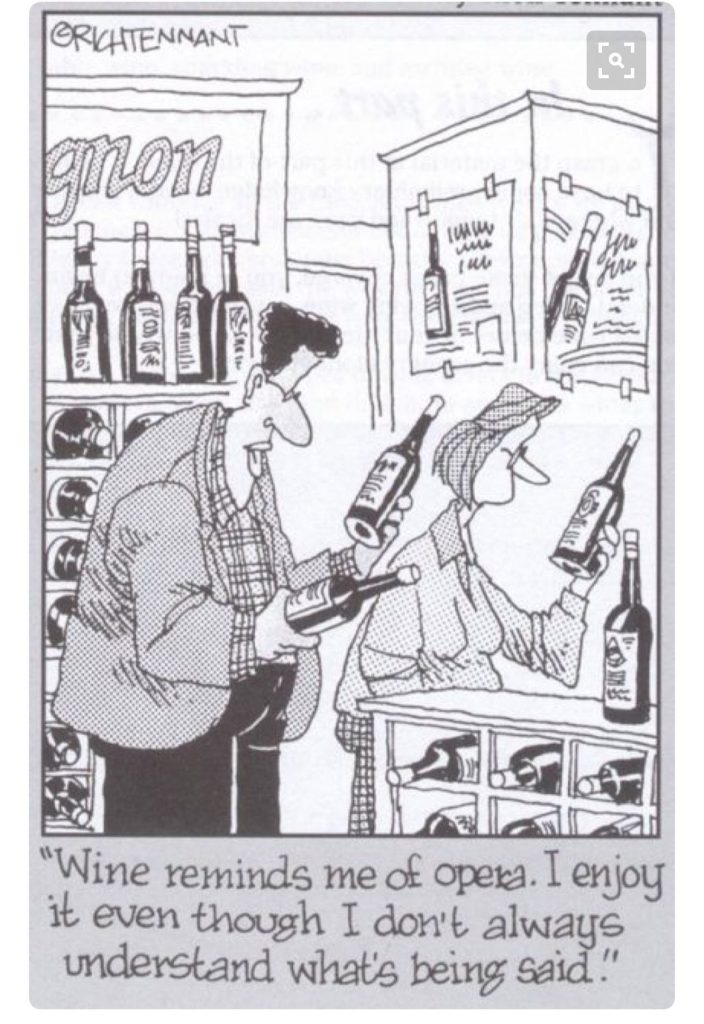 In addition to petroleum notes and historical references, Riesling’s marketing bid for popularity beyond the relatively narrow band of oenophilic geeks is further hampered by the maddingly complex world of German wine labels. Like other Old World countries, German labels place great importance on terroir, granting a place of honor on the label to the wines origin, however, unlike French wines for instance, the varietal name also appears on the label. An in-depth discussion of German wine classification and labels is far beyond the scope of our already extensive newsletter, but I will briefly outline some general and basic concepts (and, if you are so inclined, you can read more about the topic
In addition to petroleum notes and historical references, Riesling’s marketing bid for popularity beyond the relatively narrow band of oenophilic geeks is further hampered by the maddingly complex world of German wine labels. Like other Old World countries, German labels place great importance on terroir, granting a place of honor on the label to the wines origin, however, unlike French wines for instance, the varietal name also appears on the label. An in-depth discussion of German wine classification and labels is far beyond the scope of our already extensive newsletter, but I will briefly outline some general and basic concepts (and, if you are so inclined, you can read more about the topic 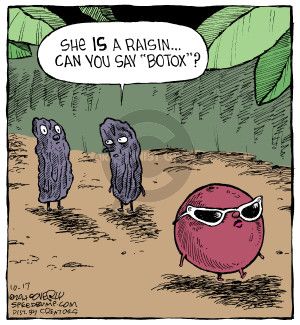 (literally quality wine intended for the winemakers cabinet, light, fruity and usually semi-sweet), Spätlese (late harvest, usually semi-sweet, heavier and fruitier than Kabinett), Auslese (very ripe, usually semi-sweet to sweet and often botrytized), Beerenauslese (select berry harvest, overripe grapes – usually botrytized) and Trockenbeerenauslese (TBA) (dry berry selection, using shriveled grapes, usually botrytized) (TBA wines are among the most highly-coveted (and expensive) of them all).
(literally quality wine intended for the winemakers cabinet, light, fruity and usually semi-sweet), Spätlese (late harvest, usually semi-sweet, heavier and fruitier than Kabinett), Auslese (very ripe, usually semi-sweet to sweet and often botrytized), Beerenauslese (select berry harvest, overripe grapes – usually botrytized) and Trockenbeerenauslese (TBA) (dry berry selection, using shriveled grapes, usually botrytized) (TBA wines are among the most highly-coveted (and expensive) of them all).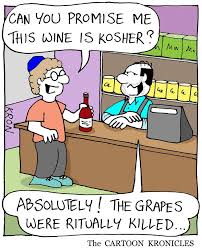 While this newsletter spent some time celebration the breakthrough in achieving success with real Riesling, the varietal’s penetration of the kosher wine market is far from assured. In addition to all the difficulties we have discussed, kosher wine consumers suffer from a malaise that prevents them from trying new varietals with which they have little familiarity. Lastly, and looming large over all others is the widely held aversion many Jews continue to have with respect to German products, a position strongly shared by my family (this made procuring everyday items somewhat challenging growing up in Israel during the 80s when reparations where at full throttle and literally everything was sourced from Germany – from wooden pencils to public buses. While I have slightly loosened the reins on this over the years, it is exclusively limited to wine and food related items (e.g. knives and wine glasses). For those not adhering to this practice, I strongly recommend trying the new Rieslings – you are in for a treat.
While this newsletter spent some time celebration the breakthrough in achieving success with real Riesling, the varietal’s penetration of the kosher wine market is far from assured. In addition to all the difficulties we have discussed, kosher wine consumers suffer from a malaise that prevents them from trying new varietals with which they have little familiarity. Lastly, and looming large over all others is the widely held aversion many Jews continue to have with respect to German products, a position strongly shared by my family (this made procuring everyday items somewhat challenging growing up in Israel during the 80s when reparations where at full throttle and literally everything was sourced from Germany – from wooden pencils to public buses. While I have slightly loosened the reins on this over the years, it is exclusively limited to wine and food related items (e.g. knives and wine glasses). For those not adhering to this practice, I strongly recommend trying the new Rieslings – you are in for a treat.
 Over the 15 years of writing this newsletter, my primary objective (beyond getting folks to drink more wine) has been to encourage people to step outside their comfort zone and try new wines and expand their oenophilic horizons to better appreciate the majestic world of wine, for which the kosher consumer’s options are constantly growing. Far beyond its generic description of fermented grape juice, wine is associated with celebration and is used to sanctify our most sacred days, times and customs. However, it is also a beverage, there to give pleasure and this people should drink what they like, regardless of what anyone else – professional or not, may say. If you like the wine – that means it’s a good wine (for you).
Over the 15 years of writing this newsletter, my primary objective (beyond getting folks to drink more wine) has been to encourage people to step outside their comfort zone and try new wines and expand their oenophilic horizons to better appreciate the majestic world of wine, for which the kosher consumer’s options are constantly growing. Far beyond its generic description of fermented grape juice, wine is associated with celebration and is used to sanctify our most sacred days, times and customs. However, it is also a beverage, there to give pleasure and this people should drink what they like, regardless of what anyone else – professional or not, may say. If you like the wine – that means it’s a good wine (for you). The last member of this family is probably the most famous and widely revered by wine-lovers everywhere – the White Zinfandel. While most readers of this newsletter are undoubtedly familiar with the brash and tannic older brother – “regular” (or Red) Zinfandel, sugary White Zinfandel, is the most widely sold wine in America and for good reason. Low in alcohol and loaded with delightful flavors of skittles, cotton candy, bubble gum, this is an exceptionally easy-drinking wine, preferred by any self-respecting oenophile. It has the panache of quality and is loaded with enough complexity to keep even the most snobbish wine drinker interested and engaged. I have reviewed one of these wines below as well and highly recommend grabbing a bottle (or case) and seeing for yourself.
The last member of this family is probably the most famous and widely revered by wine-lovers everywhere – the White Zinfandel. While most readers of this newsletter are undoubtedly familiar with the brash and tannic older brother – “regular” (or Red) Zinfandel, sugary White Zinfandel, is the most widely sold wine in America and for good reason. Low in alcohol and loaded with delightful flavors of skittles, cotton candy, bubble gum, this is an exceptionally easy-drinking wine, preferred by any self-respecting oenophile. It has the panache of quality and is loaded with enough complexity to keep even the most snobbish wine drinker interested and engaged. I have reviewed one of these wines below as well and highly recommend grabbing a bottle (or case) and seeing for yourself.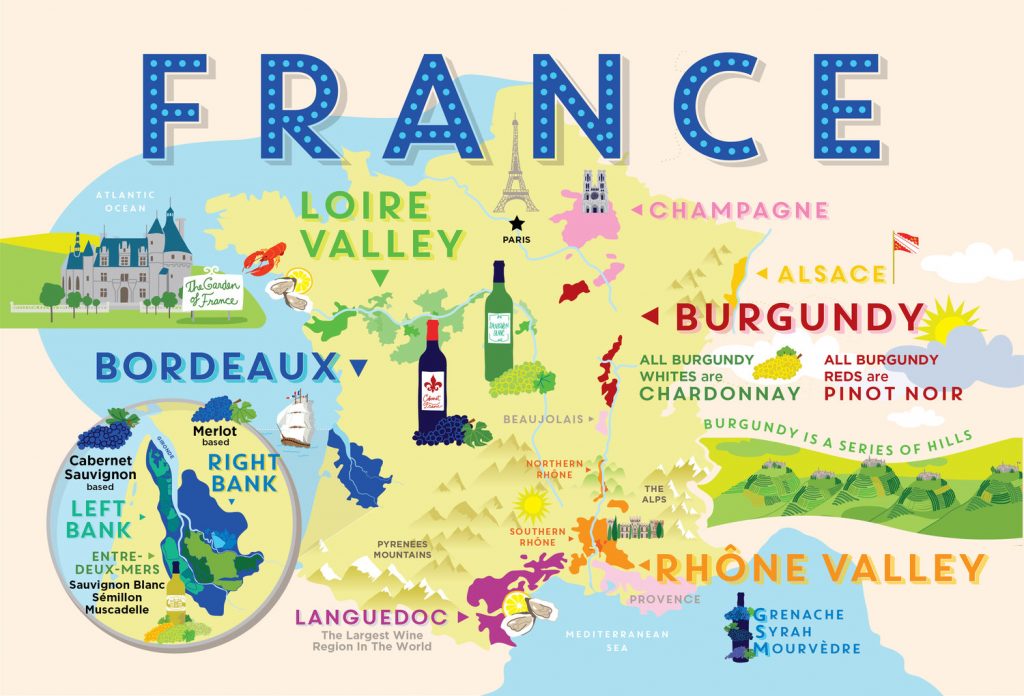
 A general hostility towards France as a result of its opposition to the Iraq War rapidly coalesced around French products, with a focus on those most-closely associated with France – perfume, cheese and of course, wine. Given the war’s perceived importance to Israel’s security, the kosher market took its boycott of French wine to extreme levels, a measure that greatly benefited Israeli wine which enjoyed a huge resurgence during this time.
A general hostility towards France as a result of its opposition to the Iraq War rapidly coalesced around French products, with a focus on those most-closely associated with France – perfume, cheese and of course, wine. Given the war’s perceived importance to Israel’s security, the kosher market took its boycott of French wine to extreme levels, a measure that greatly benefited Israeli wine which enjoyed a huge resurgence during this time. With all these changes on the horizon I felt it was time to see things with my own eyes so earlier this year I was fortunate to have been afforded the rare opportunity to visit some of the château currently producing kosher wines (including a very special day spent at Champagne Drappier). While the logistics of kosher wine production doesn’t typically allow for regular visitation at these wineries, the largest producer/importer of kosher French wine – Royal Wine graciously accommodated my request and arranged for a tour through some of their portfolio of châteaux (as per my custom, I paid for my entire trip). I was lucky to be accompanied by Menachem Israelievitch, (Royal’s European kosher winemaker who works with the various châteaux on the kosher wine production) who graciously drove me around and ensured a successful tasting. A big thank you is due to the various châteaux for their time and generous hospitality, to Royal Wine for providing me with the opportunity and to Menachem for his generous allocation of time while chauffeuring me around and answering all my questions, the result of which are included in this week’s newsletter.
With all these changes on the horizon I felt it was time to see things with my own eyes so earlier this year I was fortunate to have been afforded the rare opportunity to visit some of the château currently producing kosher wines (including a very special day spent at Champagne Drappier). While the logistics of kosher wine production doesn’t typically allow for regular visitation at these wineries, the largest producer/importer of kosher French wine – Royal Wine graciously accommodated my request and arranged for a tour through some of their portfolio of châteaux (as per my custom, I paid for my entire trip). I was lucky to be accompanied by Menachem Israelievitch, (Royal’s European kosher winemaker who works with the various châteaux on the kosher wine production) who graciously drove me around and ensured a successful tasting. A big thank you is due to the various châteaux for their time and generous hospitality, to Royal Wine for providing me with the opportunity and to Menachem for his generous allocation of time while chauffeuring me around and answering all my questions, the result of which are included in this week’s newsletter.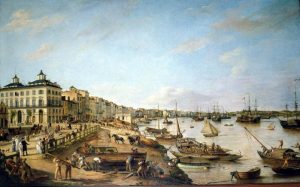 Truth be told, the age-old real estate adage suffices to really explain what makes Bordeaux so unique – location, location and location (geopolitical and geographical). Likely introduced to the region by the conquering Romans in middle of the first century, wine production has continued unabated since that time. Bordeaux’s position as a major port city led it to become synonymous with global trade and introduced major prosperity to the city and its merchants. Easy access to ships traveling towards the world’s aristocracy and nobility. Following in their footsteps, the wealthy classes of Old Europe (primarily in Great Britain starting in 12th century onward and the Netherlands starting in the 17th century) started collecting and aging the wines, thus cementing Bordeaux’s status as the wines of the upper class. However, the primary reason it has endured as the world’s primeur wine-growing region is
Truth be told, the age-old real estate adage suffices to really explain what makes Bordeaux so unique – location, location and location (geopolitical and geographical). Likely introduced to the region by the conquering Romans in middle of the first century, wine production has continued unabated since that time. Bordeaux’s position as a major port city led it to become synonymous with global trade and introduced major prosperity to the city and its merchants. Easy access to ships traveling towards the world’s aristocracy and nobility. Following in their footsteps, the wealthy classes of Old Europe (primarily in Great Britain starting in 12th century onward and the Netherlands starting in the 17th century) started collecting and aging the wines, thus cementing Bordeaux’s status as the wines of the upper class. However, the primary reason it has endured as the world’s primeur wine-growing region is 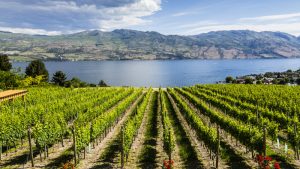 So what exactly is Bordeaux wine (besides obviously being wine produced in the Bordeaux region of France)? Unlike wines produced in the United States, Israel and other “
So what exactly is Bordeaux wine (besides obviously being wine produced in the Bordeaux region of France)? Unlike wines produced in the United States, Israel and other “ With wine so-closely tied to France’s identity, over the years French authorities have instituted a plethora of laws intended to protect the industry and maintain the quality of wine necessary for Bordeaux’s continued dominance. Chief among these laws are those pertaining to Appellation d’origine controlee (“AOC”) – protected designation of origin); which dictate how wines can be labeled, marketed and sold (other French agriculture products like cheese and butter are also subject to these same rules). The country’s wine producing regions are divided into many regions and sub-regions and each one carries its own set of rules of what can and cannot go into the wine in order to carry the specific AOC designation. Additionally, in order to be deemed a Bordeaux-blend, the wine needs to include Cabernet Sauvignon and Merlot but can also legally include Cabernet Franc, Petit Verdot, Malbec and Carménère.
With wine so-closely tied to France’s identity, over the years French authorities have instituted a plethora of laws intended to protect the industry and maintain the quality of wine necessary for Bordeaux’s continued dominance. Chief among these laws are those pertaining to Appellation d’origine controlee (“AOC”) – protected designation of origin); which dictate how wines can be labeled, marketed and sold (other French agriculture products like cheese and butter are also subject to these same rules). The country’s wine producing regions are divided into many regions and sub-regions and each one carries its own set of rules of what can and cannot go into the wine in order to carry the specific AOC designation. Additionally, in order to be deemed a Bordeaux-blend, the wine needs to include Cabernet Sauvignon and Merlot but can also legally include Cabernet Franc, Petit Verdot, Malbec and Carménère. While most of the world has moved towards a merit-based ranking (in all aspects), Bordeaux (and many other Old World wine-producing countries) continues to determine the prestige (and resulting economics) of its châteaux by stubbornly adhering to a classification system that takes other factors into account as well. The primary system is the Official Classification of 1855 which was created for the 1855 Paris exposition at the behest of Napoleon who wanted a ranking for the best wines of Bordeaux to be showcased at the exposition for the entire world to see. Wine brokers and merchants from around the world were asked to rank the wines, which they did according to reputation and price – then considered factors directly correlating to quality. The wines were ranked from first to fifth growths, with all of the wines coming from the Left Bank and only one red wine coming from Graves (the rest hailed from the Médoc). Even though they were deemed far inferior to red wines at that time, white wines received their own, separate qualification, with the highest ranking called “Superior First Growth” (Premier Cru Superior) and allocated only to one wine – Château d’Yquem. While we await a kosher d’Yquem, we get to enjoy four different First Growth (one run down the ladder) – Sauternes, all of which I have reviewed and recommended – Château La Tour Blanche (2014), Château Clos Haut-Peyraguey (2014), Château de Rayne-Vigneau (2014) and Château Guiraud (1999-2001, 2016).
While most of the world has moved towards a merit-based ranking (in all aspects), Bordeaux (and many other Old World wine-producing countries) continues to determine the prestige (and resulting economics) of its châteaux by stubbornly adhering to a classification system that takes other factors into account as well. The primary system is the Official Classification of 1855 which was created for the 1855 Paris exposition at the behest of Napoleon who wanted a ranking for the best wines of Bordeaux to be showcased at the exposition for the entire world to see. Wine brokers and merchants from around the world were asked to rank the wines, which they did according to reputation and price – then considered factors directly correlating to quality. The wines were ranked from first to fifth growths, with all of the wines coming from the Left Bank and only one red wine coming from Graves (the rest hailed from the Médoc). Even though they were deemed far inferior to red wines at that time, white wines received their own, separate qualification, with the highest ranking called “Superior First Growth” (Premier Cru Superior) and allocated only to one wine – Château d’Yquem. While we await a kosher d’Yquem, we get to enjoy four different First Growth (one run down the ladder) – Sauternes, all of which I have reviewed and recommended – Château La Tour Blanche (2014), Château Clos Haut-Peyraguey (2014), Château de Rayne-Vigneau (2014) and Château Guiraud (1999-2001, 2016). This classification reigns supreme even today and has been changed only twice in its 160 year history. Château Cantemerle was added as a fifth growth in 1856 and, after decades of extensive lobbying by the powerful
This classification reigns supreme even today and has been changed only twice in its 160 year history. Château Cantemerle was added as a fifth growth in 1856 and, after decades of extensive lobbying by the powerful  Among Bordeaux’s many claims to fame is the wine’s ability to age for decades, while evolving throughout the years, with evolution being more desirable than surviving (i.e. wines that stay the same but last a long time are less interesting than those that change and mature over time). We have previously
Among Bordeaux’s many claims to fame is the wine’s ability to age for decades, while evolving throughout the years, with evolution being more desirable than surviving (i.e. wines that stay the same but last a long time are less interesting than those that change and mature over time). We have previously 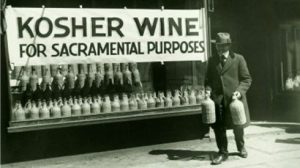 While we are blessed with many top notch kosher Bordeaux wines, there are no kosher wineries in Bordeaux. Rather, the various châteaux produce kosher runs of certain wines within their portfolio, nearly always at the behest of a kosher importer. While many of these kosher runs are excellent and can qualitatively match their non-kosher brethren, they will never be exactly the same wine (despite bearing the nearly identical label). . The reason for this is due to the actual mechanics in how kosher wines are made at non-kosher wineries and usually results in a different blend than the non-kosher version. With the château’s name on the bottle its reputation is tied to how the resulting wine turns out, so obviously the château does its best to ensure that the kosher version adheres as best possible to winery’s style and closely resembles the wine in question (even though the production method is different).
While we are blessed with many top notch kosher Bordeaux wines, there are no kosher wineries in Bordeaux. Rather, the various châteaux produce kosher runs of certain wines within their portfolio, nearly always at the behest of a kosher importer. While many of these kosher runs are excellent and can qualitatively match their non-kosher brethren, they will never be exactly the same wine (despite bearing the nearly identical label). . The reason for this is due to the actual mechanics in how kosher wines are made at non-kosher wineries and usually results in a different blend than the non-kosher version. With the château’s name on the bottle its reputation is tied to how the resulting wine turns out, so obviously the château does its best to ensure that the kosher version adheres as best possible to winery’s style and closely resembles the wine in question (even though the production method is different). First, contracts for the kosher runs are done over a year in advance of actual harvest and specific plots are allocated by the château for this purpose so, even in the infrequent occasions were a proportionate ratio all of the varieties going into the blend are allocated for the kosher run, the kosher run will be a snapshot of the specific plots, parcels or vines while the regular version will be a blend across all of the rest of the grapes (yielding a different but not necessarily better or worse wine). Additionally, the kosher requirement that only Orthodox Jews handle the wine post-picking adds additional complications and further constrains the winemaker’s ability in making those determinations for the kosher run, especially the ability to pick each varietal in at exactly the right time. . Like most non-Israel wine-producing countries, the availability of qualified Orthodox folk is relatively sparse and most of them will work at more than one winery (which limits the amount of time they can allocate to any specific winery, where all the other workers are full-time employees). Being Sabbath-observant also limits the times in which the grapes can be picked and harvest-season’s chag-concentrated period between Rosh Hashana and Simchat Torah further complicates matters and can often result in less than optimum picking times for the kosher-ordained plots.
First, contracts for the kosher runs are done over a year in advance of actual harvest and specific plots are allocated by the château for this purpose so, even in the infrequent occasions were a proportionate ratio all of the varieties going into the blend are allocated for the kosher run, the kosher run will be a snapshot of the specific plots, parcels or vines while the regular version will be a blend across all of the rest of the grapes (yielding a different but not necessarily better or worse wine). Additionally, the kosher requirement that only Orthodox Jews handle the wine post-picking adds additional complications and further constrains the winemaker’s ability in making those determinations for the kosher run, especially the ability to pick each varietal in at exactly the right time. . Like most non-Israel wine-producing countries, the availability of qualified Orthodox folk is relatively sparse and most of them will work at more than one winery (which limits the amount of time they can allocate to any specific winery, where all the other workers are full-time employees). Being Sabbath-observant also limits the times in which the grapes can be picked and harvest-season’s chag-concentrated period between Rosh Hashana and Simchat Torah further complicates matters and can often result in less than optimum picking times for the kosher-ordained plots. Given its stature, it shouldn’t be surprising that the best Bordeaux wines command astronomical prices (some first growths are approaching $1,000 a bottle). However, as the largest wine-producing region of France, there are plenty of more affordable options among the thousands of wines produced. As the kosher French wine market continues to grow, we are seeing many more options than ever before and these run the entire gamut of prices as well (although with no kosher first growths, $300 is the current ceiling for newly released wines). That said, I often hear complaints about the disparate pricing between the kosher and non-kosher versions, where the kosher version will often be priced between 60-200% higher than its non-kosher peer (a pricing discrepancy that doesn’t exist in Israel, where kosher and non-kosher wines are equally expensive).
Given its stature, it shouldn’t be surprising that the best Bordeaux wines command astronomical prices (some first growths are approaching $1,000 a bottle). However, as the largest wine-producing region of France, there are plenty of more affordable options among the thousands of wines produced. As the kosher French wine market continues to grow, we are seeing many more options than ever before and these run the entire gamut of prices as well (although with no kosher first growths, $300 is the current ceiling for newly released wines). That said, I often hear complaints about the disparate pricing between the kosher and non-kosher versions, where the kosher version will often be priced between 60-200% higher than its non-kosher peer (a pricing discrepancy that doesn’t exist in Israel, where kosher and non-kosher wines are equally expensive).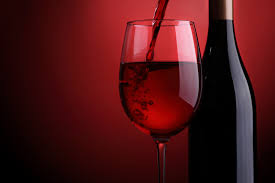 Mirroring the general consumption trends of the kosher wine market, the vast majority of kosher French runs are red blends (excluding Champagne and Sauternes). There were some great white wines made in the early 00’s but the market wasn’t there yet and it took a long time to sell out the expensive Montrachet (Burgundy Chardonnay) and Pouilly Fumé (Loire Sauvignon Blanc). Many of the 2004 whites suffered from the same
Mirroring the general consumption trends of the kosher wine market, the vast majority of kosher French runs are red blends (excluding Champagne and Sauternes). There were some great white wines made in the early 00’s but the market wasn’t there yet and it took a long time to sell out the expensive Montrachet (Burgundy Chardonnay) and Pouilly Fumé (Loire Sauvignon Blanc). Many of the 2004 whites suffered from the same  Our first stop was at the famed Château Léoville-Poyferré, located in the Saint Julian region of the Médoc appellation, long one of the top kosher French wines available (the 1999 was a constant anniversary accompaniment as I was married that year). Originally part of the much larger Léoville estate whose origins trace back to 1638 and was, at one point, the largest estate in the entire Médoc. Classified as a Second Growth in the 1855 Classification, today’s Léoville-Poyferré is one of the three individual estates resulting from Léoville’s fragmentation over the years (the other two are Léoville Barton and Léoville-Las Cases). The estate has been owned by the Cuvelier family since 1920 and they also own Château Le Crock and Moulin Riche. While Le Crock is a separate winery located in nearby Saint-Estèphe (acquired by the Cuvelier’s before Léoville in 1903), Moulin Riche is a neighboring parcel that produced Léoville’s second wine until the incredible 2009 when the family determined to grant it its own designation (although it’s not an independent winery – all the production is done at Léoville-Poyferré). Following this designation, Pavillion Poyferré was designated as the joint second wine of the two “estates” (i.e. the wine is a blend of younger vines located plot of a lessor quality located further from the river).
Our first stop was at the famed Château Léoville-Poyferré, located in the Saint Julian region of the Médoc appellation, long one of the top kosher French wines available (the 1999 was a constant anniversary accompaniment as I was married that year). Originally part of the much larger Léoville estate whose origins trace back to 1638 and was, at one point, the largest estate in the entire Médoc. Classified as a Second Growth in the 1855 Classification, today’s Léoville-Poyferré is one of the three individual estates resulting from Léoville’s fragmentation over the years (the other two are Léoville Barton and Léoville-Las Cases). The estate has been owned by the Cuvelier family since 1920 and they also own Château Le Crock and Moulin Riche. While Le Crock is a separate winery located in nearby Saint-Estèphe (acquired by the Cuvelier’s before Léoville in 1903), Moulin Riche is a neighboring parcel that produced Léoville’s second wine until the incredible 2009 when the family determined to grant it its own designation (although it’s not an independent winery – all the production is done at Léoville-Poyferré). Following this designation, Pavillion Poyferré was designated as the joint second wine of the two “estates” (i.e. the wine is a blend of younger vines located plot of a lessor quality located further from the river).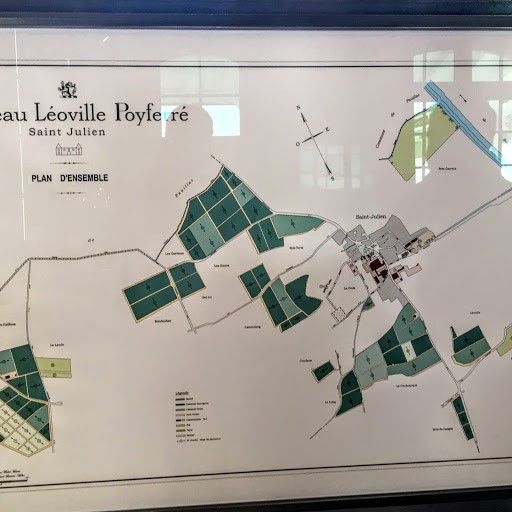 oak, Moulin Riche in 20% new oak and Pavillon aged solely in the 2nd-year barrels of both wines.
oak, Moulin Riche in 20% new oak and Pavillon aged solely in the 2nd-year barrels of both wines.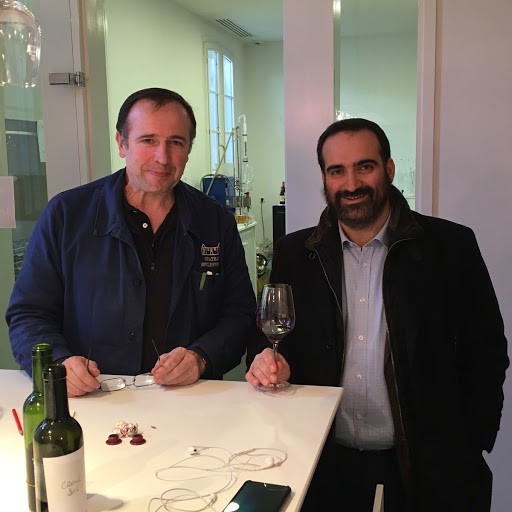 Following a tour of the winery, Menachem and I were joined in the very cool tasting room by Léoville’s head winemaker Isabelle Davin and Cellar Master Didier Thomann for some barrel
Following a tour of the winery, Menachem and I were joined in the very cool tasting room by Léoville’s head winemaker Isabelle Davin and Cellar Master Didier Thomann for some barrel  tastings. An entire wall of the tasting room is covered with the signatures of the entire whose who of the wine world, including Robert Parker, Jancis Robinson and Hugh Johnson. In addition to the star-studded team, the Château also utilizes the services of famed flying winemaker Michel Rolland who, together with the winemaking team and Menachem (for the kosher version) compile the blend. We tasted barrel samples of the 2016 Pavillon (a blend of 67% Cabernet Sauvignon and 33% Merlot (at 60+ years-old, all the Petit Verdot is designated for the higher wines)) and 2016 Le Crock (64% Cabernet Sauvignon, 30% Merlot and 6% Cabernet Franc). The Pavillon blend was pulled together for our tasting and the Le Crock will ultimately have approximately 5% of press wine added to it (we tasted the non-mevushal version, while the US will get the mevushal version). As good as 2015 was (I recommended both the Léoville and Moulin), the 2016 vintage is showing even better all around, with intense fruit and searing tannins in great balance, foreshadowing mind-bending complexity and depth (given the length of the newsletter, full blown notes of the finished wines I tasted will be in a separate missive). Unfortunately pricing will likely be commensurate, so start saving up now.
tastings. An entire wall of the tasting room is covered with the signatures of the entire whose who of the wine world, including Robert Parker, Jancis Robinson and Hugh Johnson. In addition to the star-studded team, the Château also utilizes the services of famed flying winemaker Michel Rolland who, together with the winemaking team and Menachem (for the kosher version) compile the blend. We tasted barrel samples of the 2016 Pavillon (a blend of 67% Cabernet Sauvignon and 33% Merlot (at 60+ years-old, all the Petit Verdot is designated for the higher wines)) and 2016 Le Crock (64% Cabernet Sauvignon, 30% Merlot and 6% Cabernet Franc). The Pavillon blend was pulled together for our tasting and the Le Crock will ultimately have approximately 5% of press wine added to it (we tasted the non-mevushal version, while the US will get the mevushal version). As good as 2015 was (I recommended both the Léoville and Moulin), the 2016 vintage is showing even better all around, with intense fruit and searing tannins in great balance, foreshadowing mind-bending complexity and depth (given the length of the newsletter, full blown notes of the finished wines I tasted will be in a separate missive). Unfortunately pricing will likely be commensurate, so start saving up now.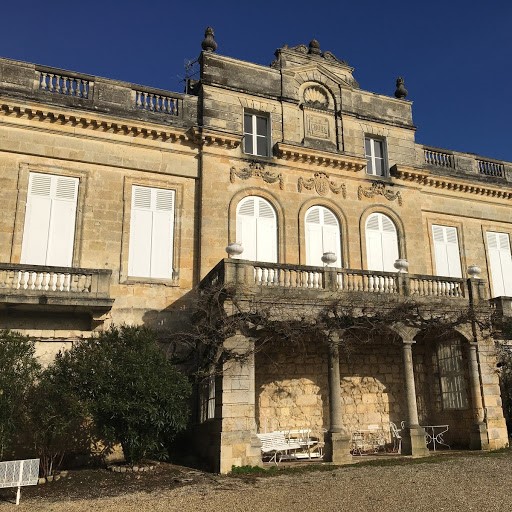 Our next stop was Château Clark, purchased in 1970 by Edmond Rothschild and today owned by his son Benjamin Rothschild, who remains the only branch of the storied Rothschild family to produce kosher wine (although I hope someone will convince
Our next stop was Château Clark, purchased in 1970 by Edmond Rothschild and today owned by his son Benjamin Rothschild, who remains the only branch of the storied Rothschild family to produce kosher wine (although I hope someone will convince 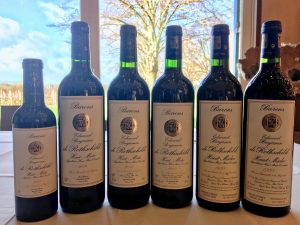 Starting with the 1986 vintage, Château Clark has been producing the kosher French wine stalwart – Barons Edmond Benjamin de Rothschild – consecutively for 30 years, skipping only the 2009 vintage. Unlike most kosher French wines, it is a wine produced solely for the kosher market and the label doesn’t exist as a non-kosher wine (contrasted to Château Malmaison and the inaugural Château Clark which are produced as kosher runs). The initiative was started by Pierre Miodownick even before he joined Royal Wines back in 1988. The portfolio also includes wines produced from the neighboring Château Malmaison, Château Parsac (located in nearby Montagne-Saint-Émilion) and Château de Laurets (with plots in Montagne-Saint-Émilion and neighboring Puisseguin-Saint-Émilion). In addition to wines sold under the Château’s labels, the Herzog family created the Les Lauriers label and utilizes grapes from Château Parsac to the Les Lauriers rosé and from Château de Laurets to make the Les Lauriers red blend.
Starting with the 1986 vintage, Château Clark has been producing the kosher French wine stalwart – Barons Edmond Benjamin de Rothschild – consecutively for 30 years, skipping only the 2009 vintage. Unlike most kosher French wines, it is a wine produced solely for the kosher market and the label doesn’t exist as a non-kosher wine (contrasted to Château Malmaison and the inaugural Château Clark which are produced as kosher runs). The initiative was started by Pierre Miodownick even before he joined Royal Wines back in 1988. The portfolio also includes wines produced from the neighboring Château Malmaison, Château Parsac (located in nearby Montagne-Saint-Émilion) and Château de Laurets (with plots in Montagne-Saint-Émilion and neighboring Puisseguin-Saint-Émilion). In addition to wines sold under the Château’s labels, the Herzog family created the Les Lauriers label and utilizes grapes from Château Parsac to the Les Lauriers rosé and from Château de Laurets to make the Les Lauriers red blend. Menachem, Fabrice and I tasted through a plethora of new wines including the first ever vintage (2016) of the winery’s flagship Château Clark and a seven-vintage vertical of the aforementioned Baron Rothschild (1998, 1999 (both non-mevushal), 2007, 2012, 2014, 2015 and barrel-tasted the 2016 (all mevushal)). The 1999 was really nice and at peak now with classic tertiary notes of mushroom and barnyard
Menachem, Fabrice and I tasted through a plethora of new wines including the first ever vintage (2016) of the winery’s flagship Château Clark and a seven-vintage vertical of the aforementioned Baron Rothschild (1998, 1999 (both non-mevushal), 2007, 2012, 2014, 2015 and barrel-tasted the 2016 (all mevushal)). The 1999 was really nice and at peak now with classic tertiary notes of mushroom and barnyard 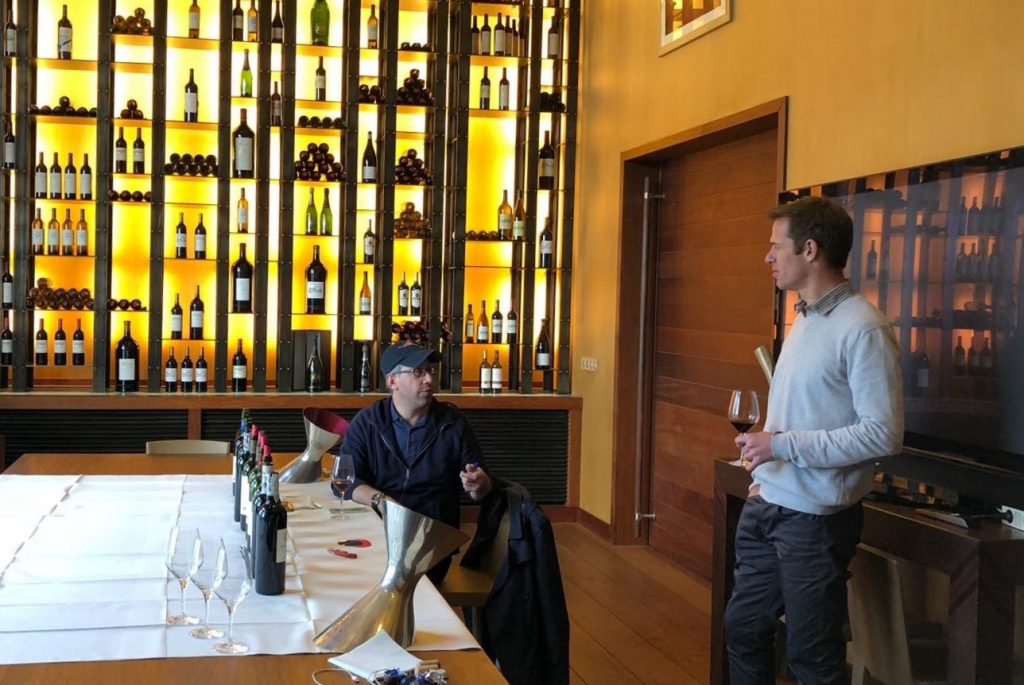 sharing center stage with subtle black fruit and hints of chocolate while the newer vintages showcased power and balance with green notes and warm spices dominating while the rich fruit needs some time to emerge and the 2016 showing great promise. Other wines tasted included the 2016 Malmaison and the 2015 and 2016 Château Parsac (also from Montagne-Saint-Émilion). We also tasted some Les Lauriers red wines (2010 mevushal and a fun comparative tasting of the mevushal and non-mevushal 2016. The 2016 Clark is 70% Merlot and 30% Cabernet Sauvignon which spent 14 months in new French oak. A deep and powerful wine with layers of complex flavors including rich black fruit, smoke, earthy minerals and chocolate backed by searing tannins and great balance with the fruit, oak and acidity which bodes well for its future. A high quality wine that I look forward to tasting again on release.
sharing center stage with subtle black fruit and hints of chocolate while the newer vintages showcased power and balance with green notes and warm spices dominating while the rich fruit needs some time to emerge and the 2016 showing great promise. Other wines tasted included the 2016 Malmaison and the 2015 and 2016 Château Parsac (also from Montagne-Saint-Émilion). We also tasted some Les Lauriers red wines (2010 mevushal and a fun comparative tasting of the mevushal and non-mevushal 2016. The 2016 Clark is 70% Merlot and 30% Cabernet Sauvignon which spent 14 months in new French oak. A deep and powerful wine with layers of complex flavors including rich black fruit, smoke, earthy minerals and chocolate backed by searing tannins and great balance with the fruit, oak and acidity which bodes well for its future. A high quality wine that I look forward to tasting again on release.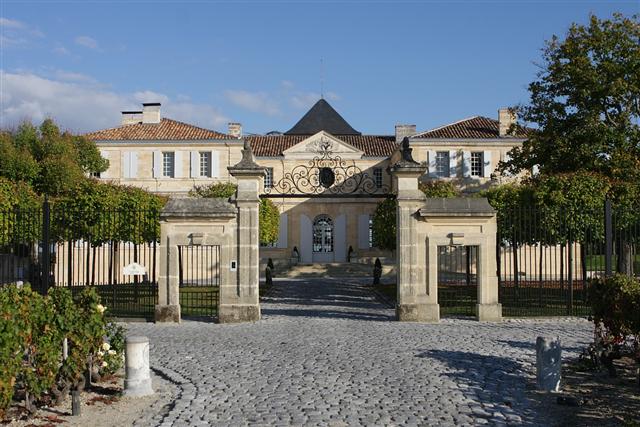 With a history dating back to 1143, Château Tertre is one of the oldest château in Bordeaux and is located in the acclaimed Marguax appellation. Benefiting from being owned for a period time during the 1700s by the famous Bordeaux glass blower Pierre Mitchell (who invented the large-format Jeroboam), it was one of the first château to bottle its wine in glass (glass still plays a prominent part in the Château’s story with a roomful of ancient glass wine bottles providing a lovely decorative touch). After centuries of acclaim
With a history dating back to 1143, Château Tertre is one of the oldest château in Bordeaux and is located in the acclaimed Marguax appellation. Benefiting from being owned for a period time during the 1700s by the famous Bordeaux glass blower Pierre Mitchell (who invented the large-format Jeroboam), it was one of the first château to bottle its wine in glass (glass still plays a prominent part in the Château’s story with a roomful of ancient glass wine bottles providing a lovely decorative touch). After centuries of acclaim  the winery’s fortunes declined until it was acquired by Philippe Gasqueton in 1961 who replanted the vineyards, modernized operations and renovated the property. The winery was subsequently sold to the owners of neighboring third-growth Château Giscours (the Jelgersma family) who are the current owners (and represent the path Royal followed to make a kosher cuvee at the winery).
the winery’s fortunes declined until it was acquired by Philippe Gasqueton in 1961 who replanted the vineyards, modernized operations and renovated the property. The winery was subsequently sold to the owners of neighboring third-growth Château Giscours (the Jelgersma family) who are the current owners (and represent the path Royal followed to make a kosher cuvee at the winery).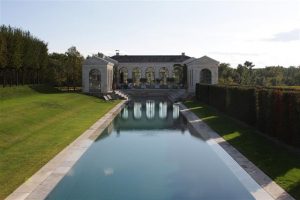 The estate enjoys one of Margaux’s highest elevations, which is also the source of its name (tertre means hill in French). Comprised of a single block of land, the vineyard is planted with 55%
The estate enjoys one of Margaux’s highest elevations, which is also the source of its name (tertre means hill in French). Comprised of a single block of land, the vineyard is planted with 55% 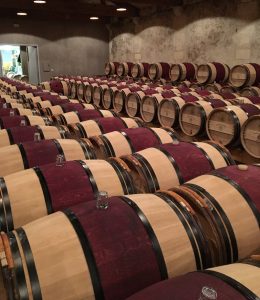 vines (the oldest parcel currently dates back to 1962). Tailoring each parcel’s winemaking process includes utilizing a plethora of vinification equipment including wood and stainless steel tanks, concrete eggs and cement vats, each in a number of different sizes with fermentation typically done in 40% oak and 60% cement.
vines (the oldest parcel currently dates back to 1962). Tailoring each parcel’s winemaking process includes utilizing a plethora of vinification equipment including wood and stainless steel tanks, concrete eggs and cement vats, each in a number of different sizes with fermentation typically done in 40% oak and 60% cement.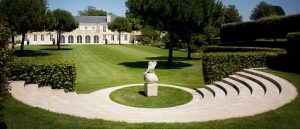 Our last stop of the day was at another estate with roots dating back to the 17th century – Château Malartic-Lagravière. While not included in the 1855 Classification, it was included in the 1953 classification of Graves and is one of only six Bordeaux properties classified for both its red and white wines (other known Graves-Classified kosher wineries are Smith-Haut-Lafite and Pape Clement). Originally known as Domaine de Lagraviere, it was renamed in the 1850’s by its new owners to honor the prior owner-family’s famous son – Comte Anne-Joseph-Hippolyte Maures de Malartic. A well-known colonial Governor and Admiral in the French Navy, it is the Admiral’s nautical connection which accounts for the Navy schooner on the Château’s logo (a large-scale gorgeous model of which is prominently displayed at the chateau. The Château passed through the Ricard (Chevalier) family and was owned for a few years by Laurent Perrier before it was acquired by its current owners – the Bonnie family – in 1997.
Our last stop of the day was at another estate with roots dating back to the 17th century – Château Malartic-Lagravière. While not included in the 1855 Classification, it was included in the 1953 classification of Graves and is one of only six Bordeaux properties classified for both its red and white wines (other known Graves-Classified kosher wineries are Smith-Haut-Lafite and Pape Clement). Originally known as Domaine de Lagraviere, it was renamed in the 1850’s by its new owners to honor the prior owner-family’s famous son – Comte Anne-Joseph-Hippolyte Maures de Malartic. A well-known colonial Governor and Admiral in the French Navy, it is the Admiral’s nautical connection which accounts for the Navy schooner on the Château’s logo (a large-scale gorgeous model of which is prominently displayed at the chateau. The Château passed through the Ricard (Chevalier) family and was owned for a few years by Laurent Perrier before it was acquired by its current owners – the Bonnie family – in 1997. After earning a fortune in the detergent business, the Bonnie’s directed their attention (and considerable resources) to their new acquisition, pouring close to $20 million into upgrading the estate by replanting many of the vineyards and completely modernizing the property. The capital improvements also including acquiring many new quality vineyards, thus growing the property from the initial 17 hectares to 52 hectares today, with 7 hectares producing white wine (allocated 80% to Sauvignon Blanc and 20% to Semillon, some of which are over 60 years old) and the remaining allocated to their red blends (allocated 45% to Cabernet Sauvignon, 45% to Merlot, 7% to Cabernet Franc and 3% to Petit Verdot) with vines averaging 35 years of age and the best quality vines are Cabernet Sauvignon dating back to 1950 which are those located right outside the winery’s gorgeous tasting room – overlooking the barrel and fermentation areas.
After earning a fortune in the detergent business, the Bonnie’s directed their attention (and considerable resources) to their new acquisition, pouring close to $20 million into upgrading the estate by replanting many of the vineyards and completely modernizing the property. The capital improvements also including acquiring many new quality vineyards, thus growing the property from the initial 17 hectares to 52 hectares today, with 7 hectares producing white wine (allocated 80% to Sauvignon Blanc and 20% to Semillon, some of which are over 60 years old) and the remaining allocated to their red blends (allocated 45% to Cabernet Sauvignon, 45% to Merlot, 7% to Cabernet Franc and 3% to Petit Verdot) with vines averaging 35 years of age and the best quality vines are Cabernet Sauvignon dating back to 1950 which are those located right outside the winery’s gorgeous tasting room – overlooking the barrel and fermentation areas.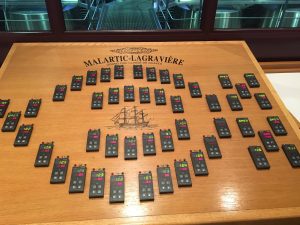 While these days Malartic’s technology may seem standard, when it was installed back in the late 90s it was considered quite revolutionary and stood out as being among the region’s most technologically advanced properties (and today continues to showcase meticulous professionalism and attention to detail). They were among the first using only
While these days Malartic’s technology may seem standard, when it was installed back in the late 90s it was considered quite revolutionary and stood out as being among the region’s most technologically advanced properties (and today continues to showcase meticulous professionalism and attention to detail). They were among the first using only 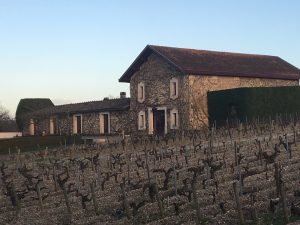 gravitational pull to move the wine from the fermentation tanks to the oak barrels in the cellar. The red wines are tank fermented, while the white wines are barrel-fermented. Instead of crushing the grapes and pumping the liquid into the fermentation vats they use pulley lifts to bring whole clusters up and into the tanks, which are located above the barrel room. Following whole-cluster fermentation, the wine is dropped into the presses and then flows directly down into the waiting barrels below, all of which helps create a less noticeably tannic and more elegant wine. They also started using a large number of different-sized fermentation containers in their aesthetically-pleasing octagonal-shaped winery, including conical vats, similar to those used by Léoville-Poyferré. Also like Léoville, they use over 30 different vats, each tailored to a different parcel within the vineyard to coax the very best possible result from each one. Other
gravitational pull to move the wine from the fermentation tanks to the oak barrels in the cellar. The red wines are tank fermented, while the white wines are barrel-fermented. Instead of crushing the grapes and pumping the liquid into the fermentation vats they use pulley lifts to bring whole clusters up and into the tanks, which are located above the barrel room. Following whole-cluster fermentation, the wine is dropped into the presses and then flows directly down into the waiting barrels below, all of which helps create a less noticeably tannic and more elegant wine. They also started using a large number of different-sized fermentation containers in their aesthetically-pleasing octagonal-shaped winery, including conical vats, similar to those used by Léoville-Poyferré. Also like Léoville, they use over 30 different vats, each tailored to a different parcel within the vineyard to coax the very best possible result from each one. Other 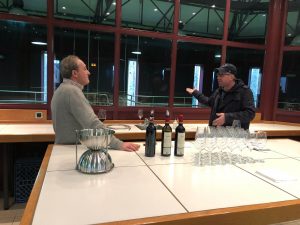 improvements including implementing a much stricter vineyard selection regime (including harvesting two or three times to ensure perfect ripening for each parcel), which led to allocating a much higher percentage of their fruit to their second wine, helping to greatly improve the quality of their Grand Vin (45% of the red grapes go to the Grand Vine and 55% to the second wine; while 80% of the white goes to the Grand Vin).
improvements including implementing a much stricter vineyard selection regime (including harvesting two or three times to ensure perfect ripening for each parcel), which led to allocating a much higher percentage of their fruit to their second wine, helping to greatly improve the quality of their Grand Vin (45% of the red grapes go to the Grand Vine and 55% to the second wine; while 80% of the white goes to the Grand Vin).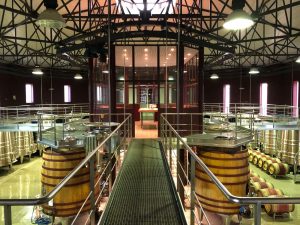 great host, showing us around the winery before we settled into the lovely tasting room to taste the [then-]recently bottled 2015 Château Gazin-Rocquencourt and a barrel sample of the now already bottled and soon to be released 2016 Château Malartic-Lagravière (I also spent some time trying to convince him to make the a kosher run of the white Malartic with Royal as you can see from my energetic hand gesticulations). The Gazin is a rich and elegant wine, showing classic Bordeaux notes of black fruit, herbal nuance with loamy earth and mushroom nose with great tannic backbone and a lingering finish. The 2016 Malartic was also showing great elegance and a more feminine sensuous structure than the Gazin with richer fruit and more elegant expression. Both are lovely.
great host, showing us around the winery before we settled into the lovely tasting room to taste the [then-]recently bottled 2015 Château Gazin-Rocquencourt and a barrel sample of the now already bottled and soon to be released 2016 Château Malartic-Lagravière (I also spent some time trying to convince him to make the a kosher run of the white Malartic with Royal as you can see from my energetic hand gesticulations). The Gazin is a rich and elegant wine, showing classic Bordeaux notes of black fruit, herbal nuance with loamy earth and mushroom nose with great tannic backbone and a lingering finish. The 2016 Malartic was also showing great elegance and a more feminine sensuous structure than the Gazin with richer fruit and more elegant expression. Both are lovely.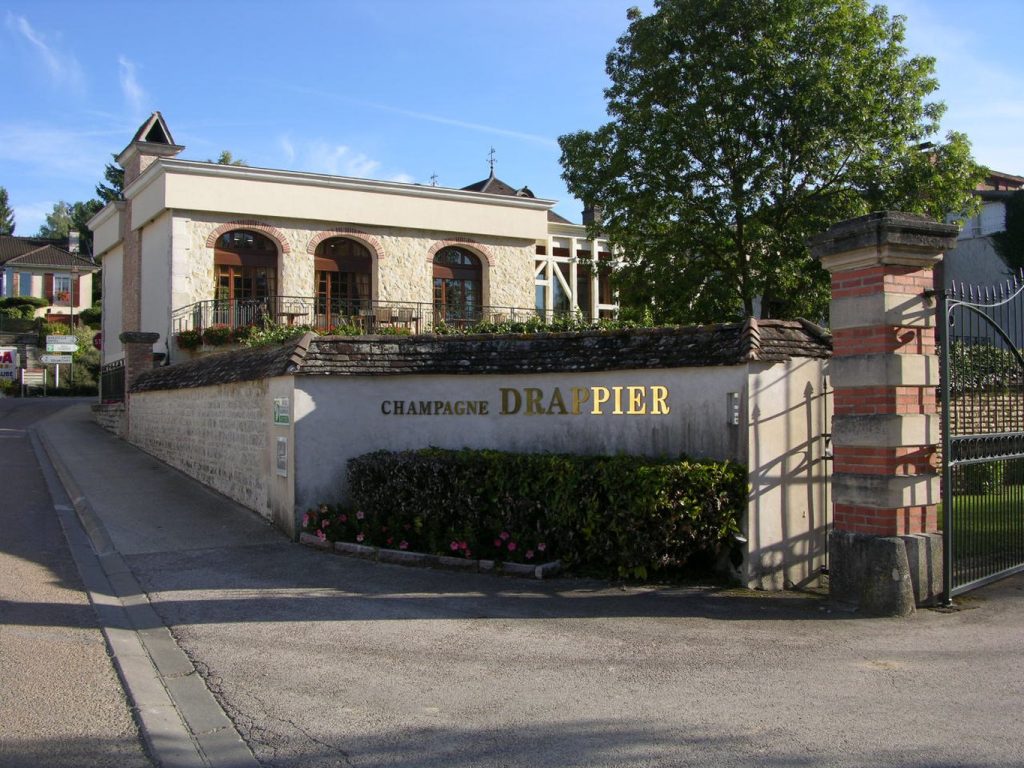 The next day was allocated to a relative newcomer and rising star within the kosher French wine world – the Champagne House of Drappier.
The next day was allocated to a relative newcomer and rising star within the kosher French wine world – the Champagne House of Drappier. The property is a great combination of new and old with parts of the vaulted cellar dating back to the 12th century and the tasting room lined with wooden panels dated even further back and found on the property. A tour through the cellars is really a walk down memory lane with ancient caverns and dusty bottles occupying space with modern winemaking technology and soon-to-be released bottes of the delicious Champagne. The ancient structure was by Monks (including St. Bernard de Clairvaux) who arrived from Côte de Nuits where they were tending the vines of acclaimed Burgundy property – Clos Vougeot (to date, the only vineyard to produce a
The property is a great combination of new and old with parts of the vaulted cellar dating back to the 12th century and the tasting room lined with wooden panels dated even further back and found on the property. A tour through the cellars is really a walk down memory lane with ancient caverns and dusty bottles occupying space with modern winemaking technology and soon-to-be released bottes of the delicious Champagne. The ancient structure was by Monks (including St. Bernard de Clairvaux) who arrived from Côte de Nuits where they were tending the vines of acclaimed Burgundy property – Clos Vougeot (to date, the only vineyard to produce a 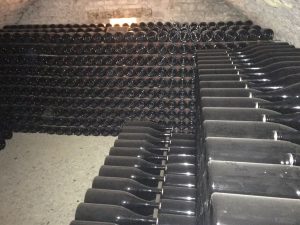 another 60 hectares throughout the Côte des Bar, Montagne de
another 60 hectares throughout the Côte des Bar, Montagne de 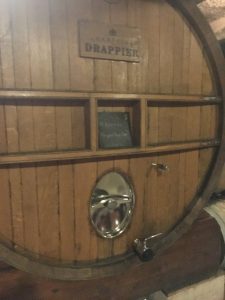 Many of the wines will sit in oak for a period of time between six months to two years before they are blended into the final blend (at which point they are bottled, topped with dosage and capped to undergo the second fermentation). To achieve the perfect blend, Michel uses a wide range of differently sized oak barrels in addition to the traditional 225 liter French barrique. Among these are 5,000 liter oak barrels sourced from the 17th century oak forest of Tronçais planted to supply Louie the 14th with wood for his ships. Oak from this forest is known for its tighter grain that imparts a more subtle flavor, making it perfectly suited for white wines.
Many of the wines will sit in oak for a period of time between six months to two years before they are blended into the final blend (at which point they are bottled, topped with dosage and capped to undergo the second fermentation). To achieve the perfect blend, Michel uses a wide range of differently sized oak barrels in addition to the traditional 225 liter French barrique. Among these are 5,000 liter oak barrels sourced from the 17th century oak forest of Tronçais planted to supply Louie the 14th with wood for his ships. Oak from this forest is known for its tighter grain that imparts a more subtle flavor, making it perfectly suited for white wines.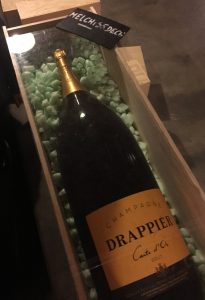 Different from many other Champagne houses who create their large format Champagnes by filling them with multiple bottles of finished regular (750 ml) sized bottles, Drappier’s large format bottles actually undergo their second fermentation in the large format bottles, a process that requires additional cost and effort but which Michel feels imparts a unique profile to the prized larger bottles. Drappier also allows the wine to continue
Different from many other Champagne houses who create their large format Champagnes by filling them with multiple bottles of finished regular (750 ml) sized bottles, Drappier’s large format bottles actually undergo their second fermentation in the large format bottles, a process that requires additional cost and effort but which Michel feels imparts a unique profile to the prized larger bottles. Drappier also allows the wine to continue 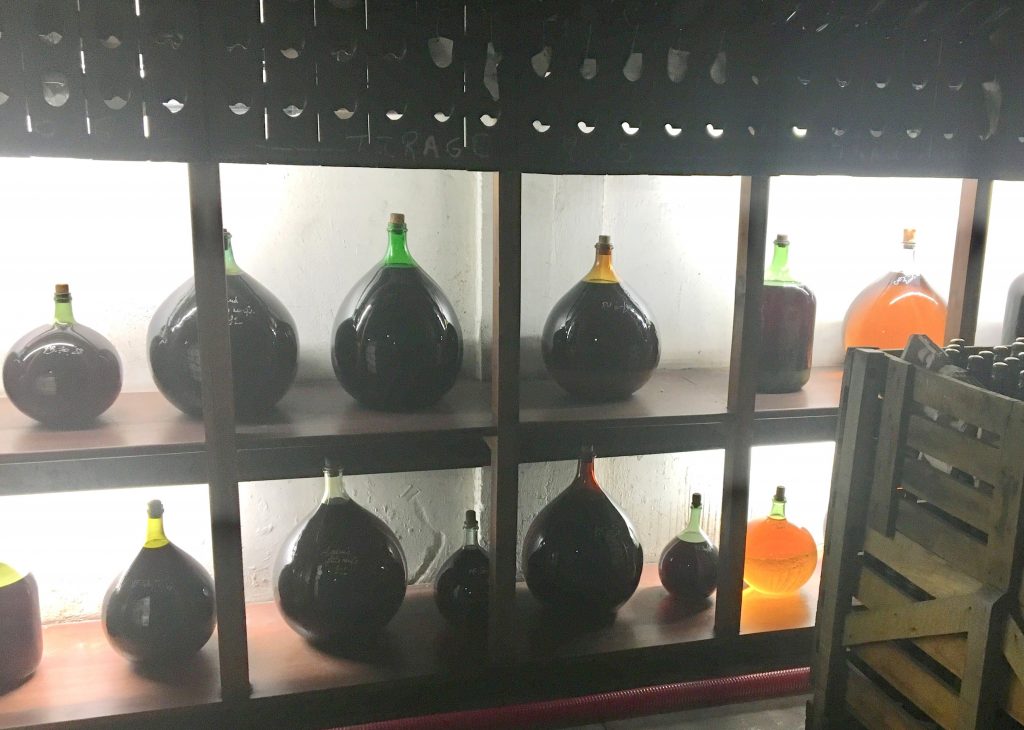 Drappier’s dosage program benefits from the same meticulous care and attention to detail that Michel brings to every other aspect of production. Using Drappier’s own wine to distill the dosage (other than for the kosher runs which obviously require kosher wine as a base), it is then aged for up to 15 years (their oldest dosage dates back to the 1959 vintage) before it is used. The goal is to use as little dosage as possible so the dosage is distilled to a highly concentrated level of 700 grams per liter. With dozens of dosages to choose from, Michel is able to provide each wine with a dosage specifically tailored for it.
Drappier’s dosage program benefits from the same meticulous care and attention to detail that Michel brings to every other aspect of production. Using Drappier’s own wine to distill the dosage (other than for the kosher runs which obviously require kosher wine as a base), it is then aged for up to 15 years (their oldest dosage dates back to the 1959 vintage) before it is used. The goal is to use as little dosage as possible so the dosage is distilled to a highly concentrated level of 700 grams per liter. With dozens of dosages to choose from, Michel is able to provide each wine with a dosage specifically tailored for it.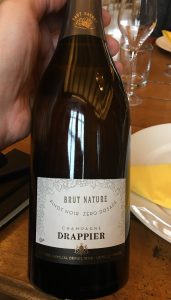 Drappier recent added two new wines to their portfolio – the kosher rosé which has not yet been released and the newly released Zero Dosage wine, made from 100% Pinot Noir which was picked as late as possible to ensure the highest levels of natural sugar. In order to retain the fresh and vibrant notes, the wine goes through full malolactic in stainless and spends two years on the lees (with no oak contact at all). The result is a vibrant and fresh wine with lovely dark fruits and a concentrated tight mousse. Beautifully seductive and elegant, it’s easily one of my favorite currently available options. Thank you again Michel for the gracious hospitality, lvely food and wine tasting anf for sharing your obvious passion with me.
Drappier recent added two new wines to their portfolio – the kosher rosé which has not yet been released and the newly released Zero Dosage wine, made from 100% Pinot Noir which was picked as late as possible to ensure the highest levels of natural sugar. In order to retain the fresh and vibrant notes, the wine goes through full malolactic in stainless and spends two years on the lees (with no oak contact at all). The result is a vibrant and fresh wine with lovely dark fruits and a concentrated tight mousse. Beautifully seductive and elegant, it’s easily one of my favorite currently available options. Thank you again Michel for the gracious hospitality, lvely food and wine tasting anf for sharing your obvious passion with me.
 Centuries of celebrity quotes trumpeting Champagne as a wine to be consumed early and often including from Winston Churchill (“Champagne is the wine of civilization and the oil of government”), F. Scott Fitzgerald (“too much of anything is bad, but too much Champagne is just right”) and Napoleon Bonaparte ( “I drink Champagne when I win, to celebrate and I drink Champagne when I lose, to console myself”; a quote plagiarized and bastardized by Churchill himself into “In victory we deserve it, in defeat we need it”) have not succeeded in convincing the wine-guzzling masses to incorporate it into their regular repertoire. Beyond our usual desire to educate and inform, I hope that this newsletter will convince at least some of you to reach for sparkling wine the next time you are looking
Centuries of celebrity quotes trumpeting Champagne as a wine to be consumed early and often including from Winston Churchill (“Champagne is the wine of civilization and the oil of government”), F. Scott Fitzgerald (“too much of anything is bad, but too much Champagne is just right”) and Napoleon Bonaparte ( “I drink Champagne when I win, to celebrate and I drink Champagne when I lose, to console myself”; a quote plagiarized and bastardized by Churchill himself into “In victory we deserve it, in defeat we need it”) have not succeeded in convincing the wine-guzzling masses to incorporate it into their regular repertoire. Beyond our usual desire to educate and inform, I hope that this newsletter will convince at least some of you to reach for sparkling wine the next time you are looking  for a refreshing and versatile wine.
for a refreshing and versatile wine. acres of prime wine-growing soil spread among 319 villages (referred to as Crus). Approximately 90% of this land is owned and farmed by nearly 15,000 independent growers with the remainder owned by the approximately 110 Champagne “Houses” and collectively yielding over 300 million bottles of Champagne a year. While the tradition of independent growers selling their crop to the houses continues for the most part, recent years have seen a proliferation of growers producing retaining all or part of their crop to produce, bottle and market Champagne under their own names with nearly 5,000 growers trying their hands these days at this process. These wines are commonly referred to as grower Champagne and are prized for their quality and uniqueness among oenophiles around the world. Unfortunately there are no kosher grower Champagne wines available today (and given the methodology of producing kosher French wine, I doubt there is any such grower Champagne in our near future either).
acres of prime wine-growing soil spread among 319 villages (referred to as Crus). Approximately 90% of this land is owned and farmed by nearly 15,000 independent growers with the remainder owned by the approximately 110 Champagne “Houses” and collectively yielding over 300 million bottles of Champagne a year. While the tradition of independent growers selling their crop to the houses continues for the most part, recent years have seen a proliferation of growers producing retaining all or part of their crop to produce, bottle and market Champagne under their own names with nearly 5,000 growers trying their hands these days at this process. These wines are commonly referred to as grower Champagne and are prized for their quality and uniqueness among oenophiles around the world. Unfortunately there are no kosher grower Champagne wines available today (and given the methodology of producing kosher French wine, I doubt there is any such grower Champagne in our near future either). Gamla (Gilgal in the US) Brut comprising the best slate of kosher sparkling wines around. Other high-end players are entering the market, with Matar releasing a new sparkling wine (which I haven’t tasted yet) and Castel having three different versions in the works (all tasted last year, but it will be a while before they are ready for market).
Gamla (Gilgal in the US) Brut comprising the best slate of kosher sparkling wines around. Other high-end players are entering the market, with Matar releasing a new sparkling wine (which I haven’t tasted yet) and Castel having three different versions in the works (all tasted last year, but it will be a while before they are ready for market). The Art of the Matter
The Art of the Matter Besides vintage and non-vintage, there are other differing styles including cuvee de prestige (typically the flagship wine of a Champagne house and usually the most well-known of its wines), Blanc de Noirs (which refers to a white wine made from dark grapes, usually Pinot Noir and Pinot Meunier), Blanc de Blanc (a white wine from white grapes only (typically Chardonnay, the best of which are sourced from the chalky slopes of the Côte des Blancs) and Rosé Champagne (nearly every major Champagne house worth its salt is producing at least one Rosé version). Produced by a
Besides vintage and non-vintage, there are other differing styles including cuvee de prestige (typically the flagship wine of a Champagne house and usually the most well-known of its wines), Blanc de Noirs (which refers to a white wine made from dark grapes, usually Pinot Noir and Pinot Meunier), Blanc de Blanc (a white wine from white grapes only (typically Chardonnay, the best of which are sourced from the chalky slopes of the Côte des Blancs) and Rosé Champagne (nearly every major Champagne house worth its salt is producing at least one Rosé version). Produced by a  Late to the Party
Late to the Party versions to date falling off the proverbial cliff within 12 months. Remember, regardless of what marketing and retailers will tell you, late disgorged is not intended as a better” wine, simply a different wine that reflects a different stage of evolution.
versions to date falling off the proverbial cliff within 12 months. Remember, regardless of what marketing and retailers will tell you, late disgorged is not intended as a better” wine, simply a different wine that reflects a different stage of evolution. Baron Rothschild, Champagne, NV: A lovely nose of yeast, rich citrus, chalk minerals, tart stone fruit, quince, pith and some tropical notes are backed on the medium bodied palate with decent acidity and a slightly larger mousse with plenty of bold citrus, rich stone fruit, pears, a hint of herbacousness and more minerals. A somewhat short finish, the wine is nice and pleasing but a little overpriced for what it provides, especially when compared to the Drappier.
Baron Rothschild, Champagne, NV: A lovely nose of yeast, rich citrus, chalk minerals, tart stone fruit, quince, pith and some tropical notes are backed on the medium bodied palate with decent acidity and a slightly larger mousse with plenty of bold citrus, rich stone fruit, pears, a hint of herbacousness and more minerals. A somewhat short finish, the wine is nice and pleasing but a little overpriced for what it provides, especially when compared to the Drappier. Champagne Drappier, Brut Nature, Zero Dosage, Pinot Noir, NV: When this was first released it earned a slot on my best Wines of 2018 list. However, as discussed above, the wine goes south rather quickly, so make sure to check the disgorgement date before buying. The wine is 100% Pinot Noir which was picked as late as possible to ensure the highest levels of natural sugar, the wine underwent full malolactic fermentation in stainless steel vats and then spent two years sur lie resulting in a vibrant and fresh-tasting wine. The Zero Dosage moniker reflects the fact that, unlike most Champagne wines, no dosage (sugar, often mixed with wine) was added to the bottle prior to the Champagne’s second fermentation in the bottle. The result is a vibrant and fresh wine that is beautifully seductive and elegant with a tight mousse and rich notes of tart green apple, yellow citrus, fresh-baked brioche and a delightful overlay of warm spices. More subtle yeasty notes than Drappier’s Carte D’Or, the medium bodied wine is complex and rich with flinty minerals, great acidity and a lingering finish that make it a welcome addition to any meal or occasion, but make sure to consume within 12 months of the disgorgement date or you are likely to be disappointed [mevushal].
Champagne Drappier, Brut Nature, Zero Dosage, Pinot Noir, NV: When this was first released it earned a slot on my best Wines of 2018 list. However, as discussed above, the wine goes south rather quickly, so make sure to check the disgorgement date before buying. The wine is 100% Pinot Noir which was picked as late as possible to ensure the highest levels of natural sugar, the wine underwent full malolactic fermentation in stainless steel vats and then spent two years sur lie resulting in a vibrant and fresh-tasting wine. The Zero Dosage moniker reflects the fact that, unlike most Champagne wines, no dosage (sugar, often mixed with wine) was added to the bottle prior to the Champagne’s second fermentation in the bottle. The result is a vibrant and fresh wine that is beautifully seductive and elegant with a tight mousse and rich notes of tart green apple, yellow citrus, fresh-baked brioche and a delightful overlay of warm spices. More subtle yeasty notes than Drappier’s Carte D’Or, the medium bodied wine is complex and rich with flinty minerals, great acidity and a lingering finish that make it a welcome addition to any meal or occasion, but make sure to consume within 12 months of the disgorgement date or you are likely to be disappointed [mevushal]. Champagne Drappier, Carte d’Or, Brut, NV: Made from a blend of 80-90% Chardonnay, 5-15% Pinot Noir and 5% Pinot Meunier (all traditional Champagne grapes, if not in this exact combination), the wine has a delightful nose of citrus, yeasty and toasty brioche, some pear, green apples and stone fruits with hints of flinty minerals and lip-smacking citrus notes. Much of the same follows on the medium-bodied palate with more yeasty notes, toasted hazelnuts, tart green apples, chalky minerals and good tight and focused bubbles that keep the flavors going on your palate including quince, rock, red grapefruit and citrus pith, and this wine was actually enjoyable the next day (under a
Champagne Drappier, Carte d’Or, Brut, NV: Made from a blend of 80-90% Chardonnay, 5-15% Pinot Noir and 5% Pinot Meunier (all traditional Champagne grapes, if not in this exact combination), the wine has a delightful nose of citrus, yeasty and toasty brioche, some pear, green apples and stone fruits with hints of flinty minerals and lip-smacking citrus notes. Much of the same follows on the medium-bodied palate with more yeasty notes, toasted hazelnuts, tart green apples, chalky minerals and good tight and focused bubbles that keep the flavors going on your palate including quince, rock, red grapefruit and citrus pith, and this wine was actually enjoyable the next day (under a  gne Heritage, Brut, Cuvée Leon / Lucien, Premier Cru, Bokobsa
gne Heritage, Brut, Cuvée Leon / Lucien, Premier Cru, Bokobsa  Sieva NV: Tasted side by side the similarities were evident, but I was surprised to learn that the two different bottlings were of the exact same wine and disheartened to learn that the reason was that each had an hashgacha that wouldn’t agree to be on the same bottle as the other… Yeah. So, onto the wine itself which was pleasurable. Good yeasty notes of toasted brioche, stone fruit, pears, quince and lemons along with chalk minerals and good balancing acidity on the medium bodied palate. Tight mousse with hints of herbal notes and more yeasty notes along with toasted hazelnuts. Not for long term cellaring but enjoyable now [produced by Bokobsa but likely only available in Europe].
Sieva NV: Tasted side by side the similarities were evident, but I was surprised to learn that the two different bottlings were of the exact same wine and disheartened to learn that the reason was that each had an hashgacha that wouldn’t agree to be on the same bottle as the other… Yeah. So, onto the wine itself which was pleasurable. Good yeasty notes of toasted brioche, stone fruit, pears, quince and lemons along with chalk minerals and good balancing acidity on the medium bodied palate. Tight mousse with hints of herbal notes and more yeasty notes along with toasted hazelnuts. Not for long term cellaring but enjoyable now [produced by Bokobsa but likely only available in Europe]. Laurent Perrier Champagne, Brut, NV: As indicated in the article, I enjoy the Brut version more than its sexier Rosé counterpart. Plenty of toasted brioche and warm nuts on the nose to go with a subdued array of green apples, citrus, peach and pear notes. With a rich and complex palate so typical of true Champagne (and usually lacking in most other sparkling wines) and loaded with yeasty bread, hints of tropical fruit, zesty citrus notes including lemon and rich grapefruit; all held together by tightly focused and tiny bubbles that continue to tantalize after the wine is gone, this is a great bottle of wine and worthy of both special occasions and a random Monday evening with someone special.
Laurent Perrier Champagne, Brut, NV: As indicated in the article, I enjoy the Brut version more than its sexier Rosé counterpart. Plenty of toasted brioche and warm nuts on the nose to go with a subdued array of green apples, citrus, peach and pear notes. With a rich and complex palate so typical of true Champagne (and usually lacking in most other sparkling wines) and loaded with yeasty bread, hints of tropical fruit, zesty citrus notes including lemon and rich grapefruit; all held together by tightly focused and tiny bubbles that continue to tantalize after the wine is gone, this is a great bottle of wine and worthy of both special occasions and a random Monday evening with someone special. Laurent Perrier Champagne, Cuvee Rosé, NV: Among the bigger Champagne “names” on the kosher market, the wine has long held an elevated status among the more mainstream kosher consumers, while more experience Champagne drinkers acknowledge the qualitative superiority of the “regular” version. Sourced from 100% Pinot Noir fruit in the same saignée methodology as still rosé wine, the nose presents much like a traditional rosé with luscious notes of strawberry, tart raspberry and citrus accompanied by a tinge of herbal notes and just a hint of yeast indicating its genre. The medium bodied palate has a decently focused mousse backed by good acidity and tannins that serve as a good backbone for the fruit and spice. Drink now (and pay attention to the disgorgement notes as the label/brand has been around for a long time and given the price point, often lingers in lessor wine shops (where it loses its luster over time).
Laurent Perrier Champagne, Cuvee Rosé, NV: Among the bigger Champagne “names” on the kosher market, the wine has long held an elevated status among the more mainstream kosher consumers, while more experience Champagne drinkers acknowledge the qualitative superiority of the “regular” version. Sourced from 100% Pinot Noir fruit in the same saignée methodology as still rosé wine, the nose presents much like a traditional rosé with luscious notes of strawberry, tart raspberry and citrus accompanied by a tinge of herbal notes and just a hint of yeast indicating its genre. The medium bodied palate has a decently focused mousse backed by good acidity and tannins that serve as a good backbone for the fruit and spice. Drink now (and pay attention to the disgorgement notes as the label/brand has been around for a long time and given the price point, often lingers in lessor wine shops (where it loses its luster over time). Dalton, Pet-Nat, 2019: One of my favorite underrated wineries, Dalton doesn’t seem to get the love is deserves as it continues to serve up well-made, well-priced and interesting wines across a broad spectrum of prices and genres. Whether the revised
Dalton, Pet-Nat, 2019: One of my favorite underrated wineries, Dalton doesn’t seem to get the love is deserves as it continues to serve up well-made, well-priced and interesting wines across a broad spectrum of prices and genres. Whether the revised